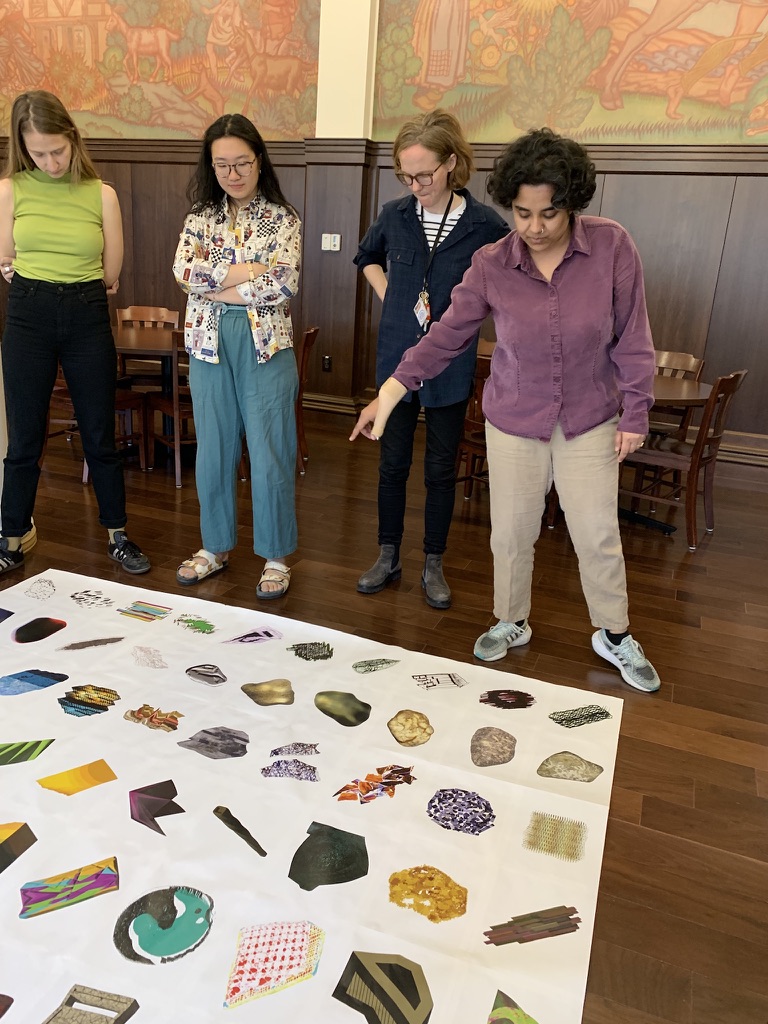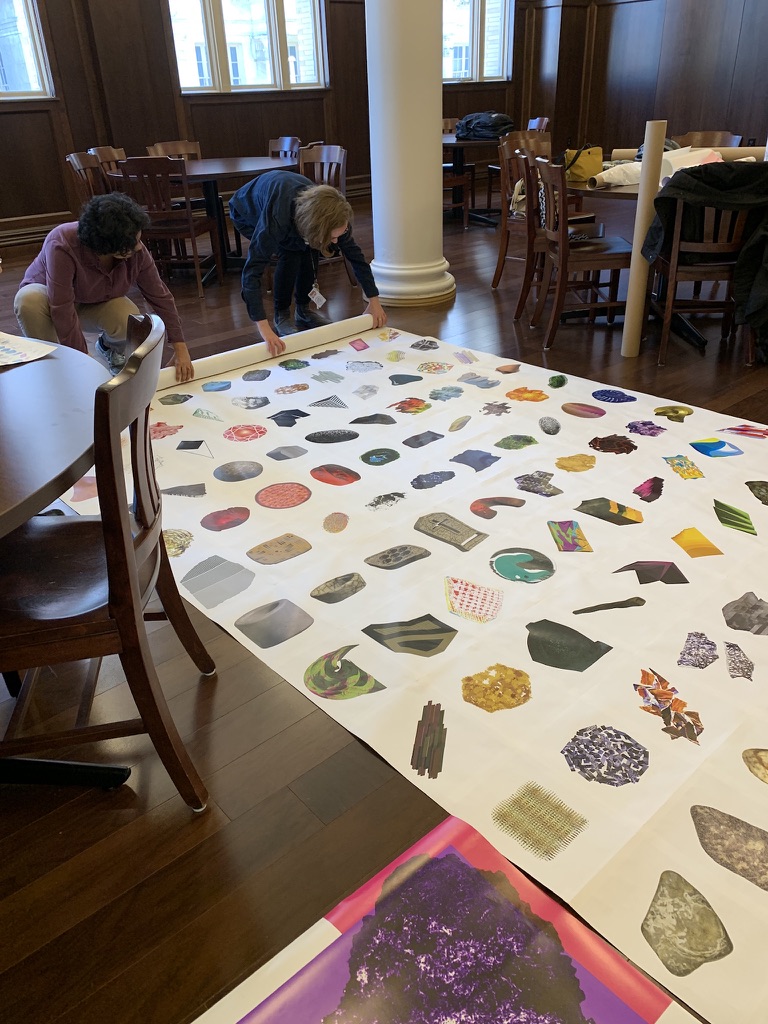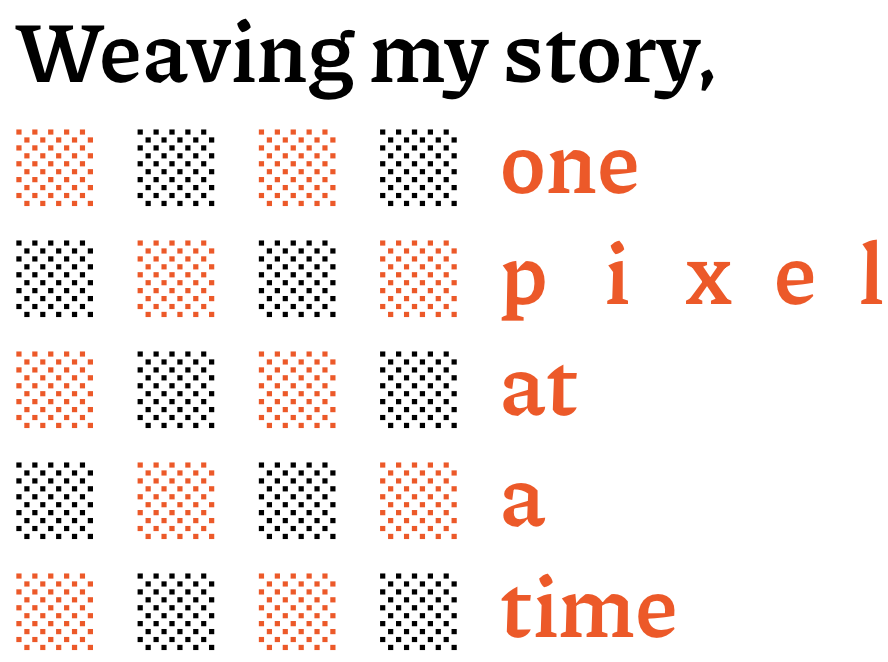Elemental Expressions
A rock is a naturally occurring solid mass or aggregate of minerals or mineraloid matter, classified by its chemical composition and formation.
This project involved using line, shape, form, space, value, texture, and color to create a library of rock formations.
Book of Rocks

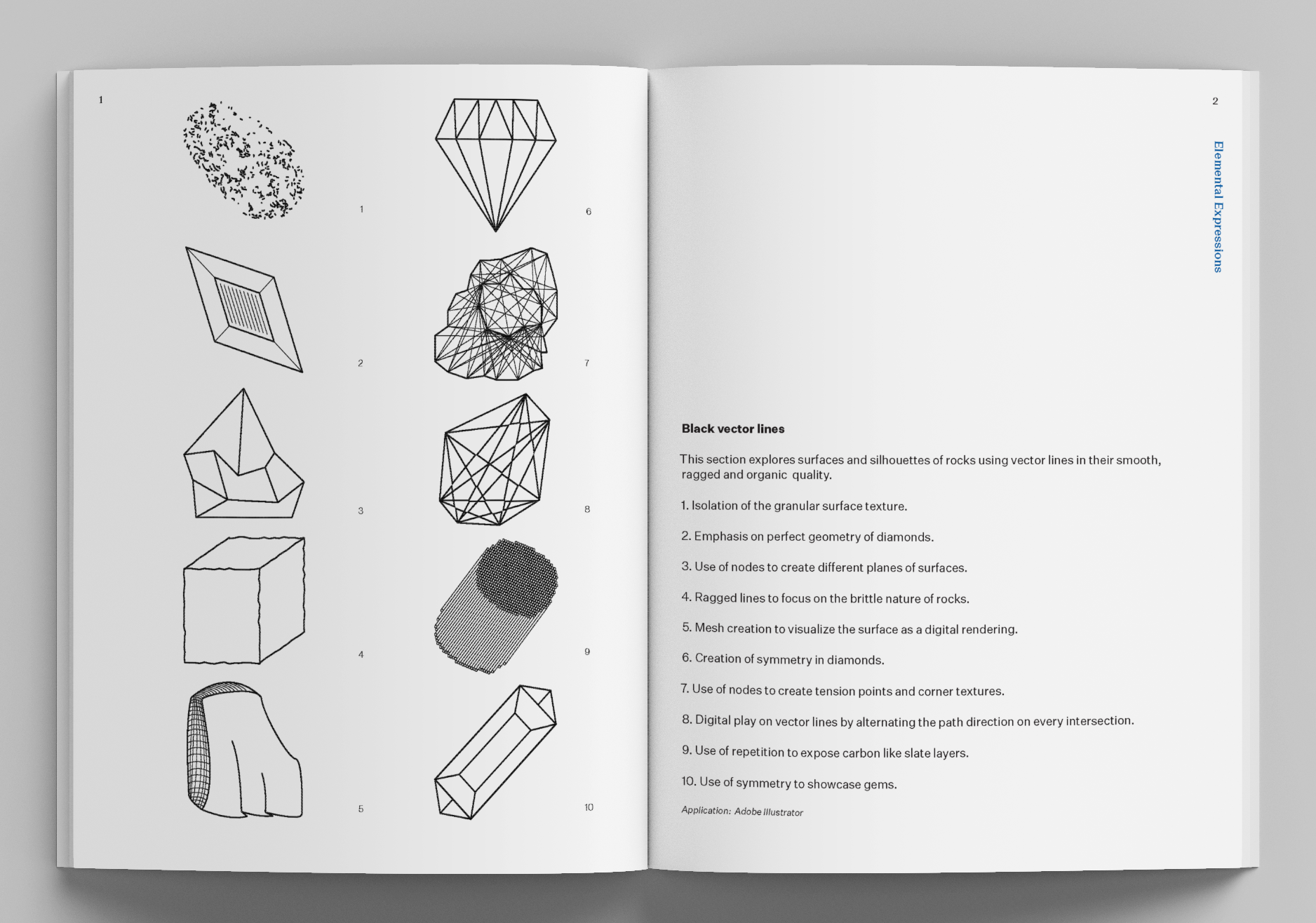


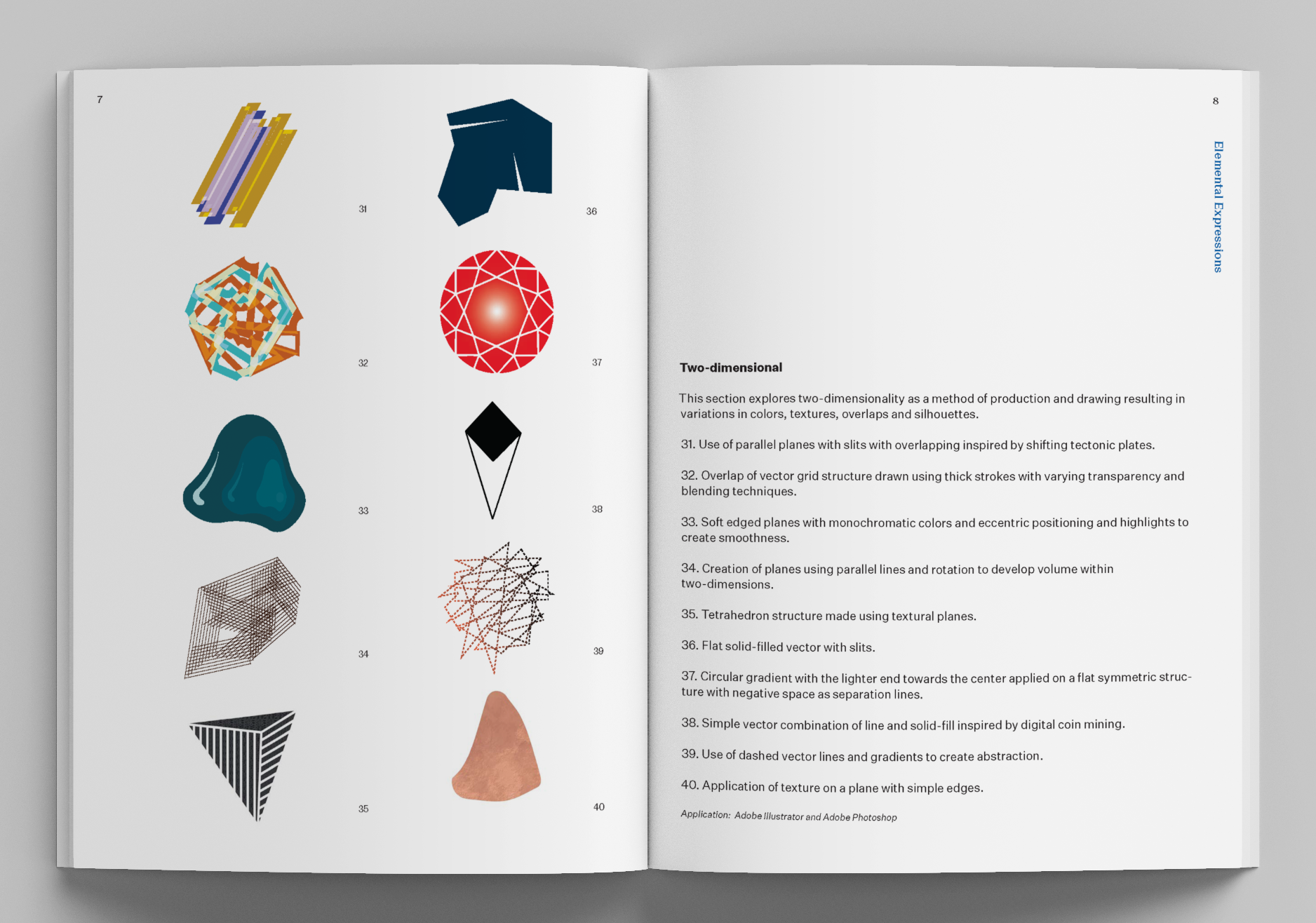
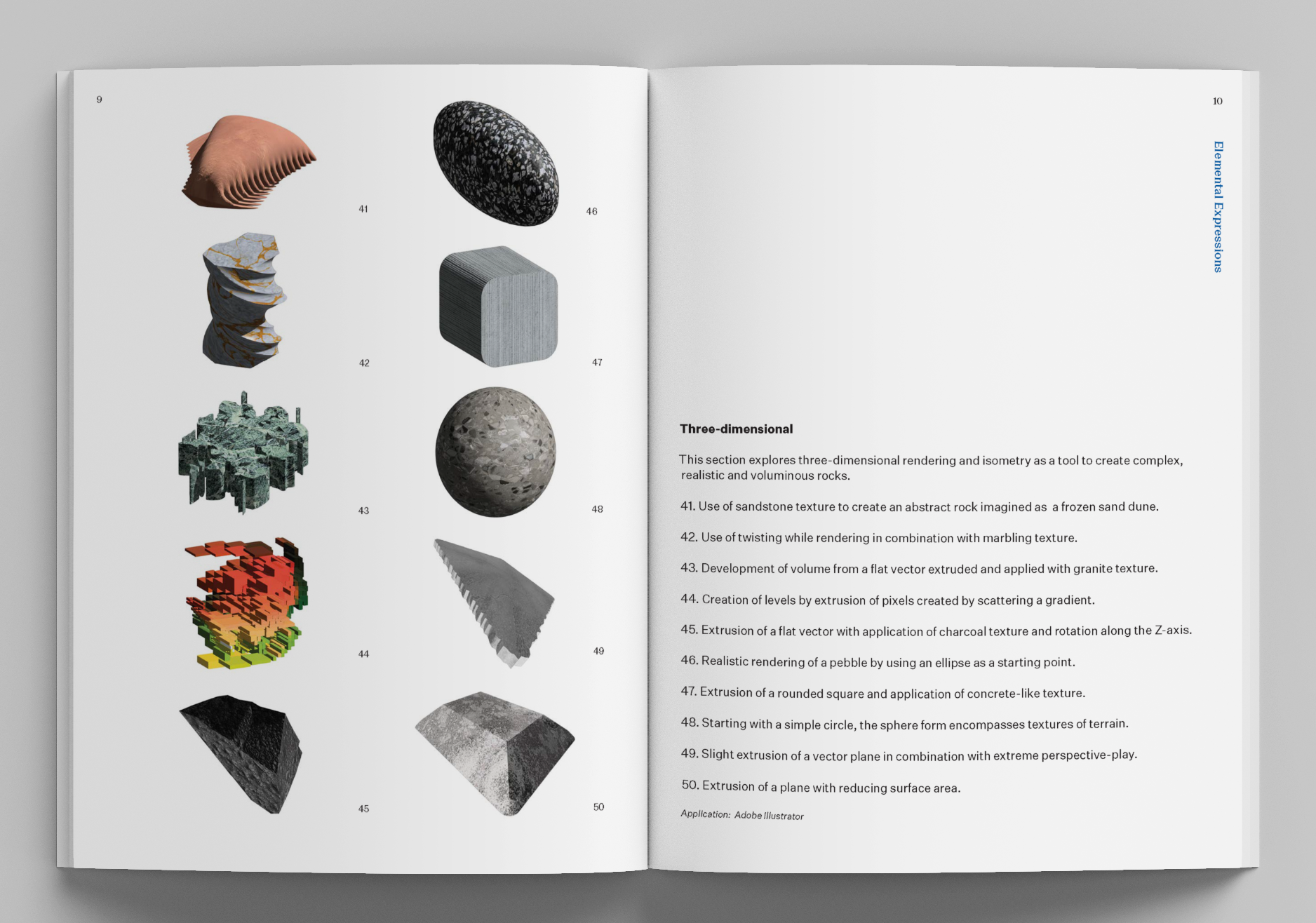
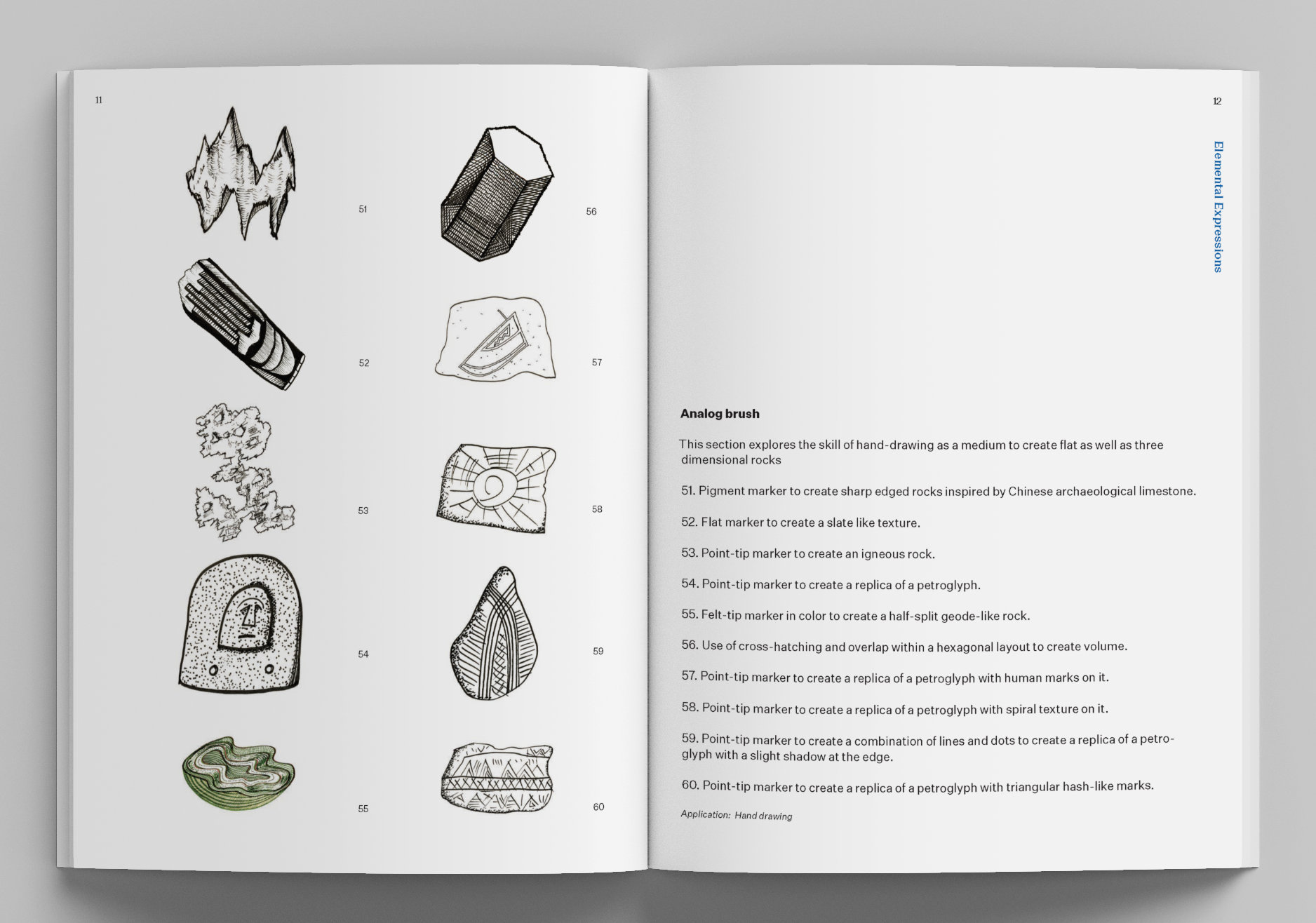
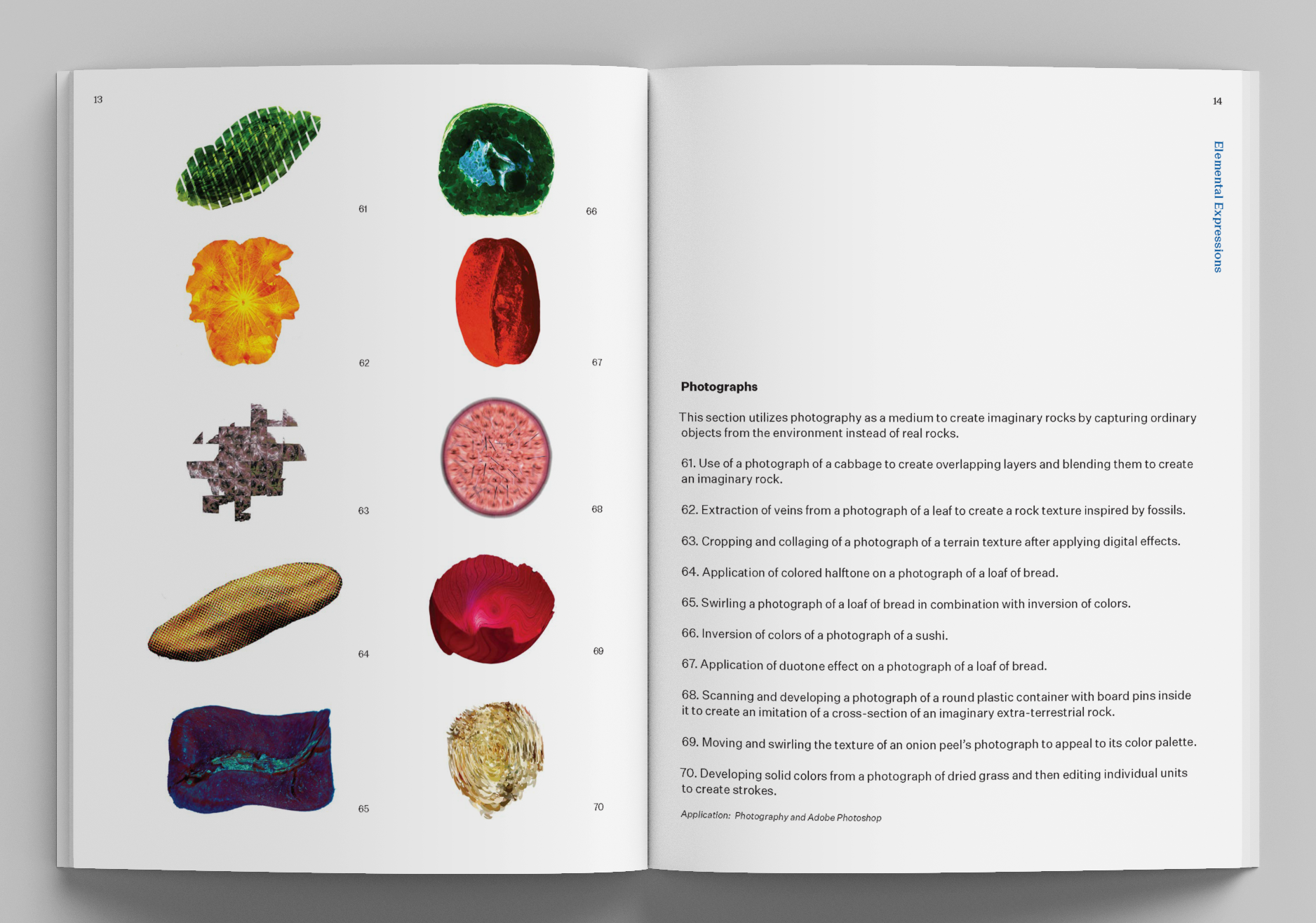
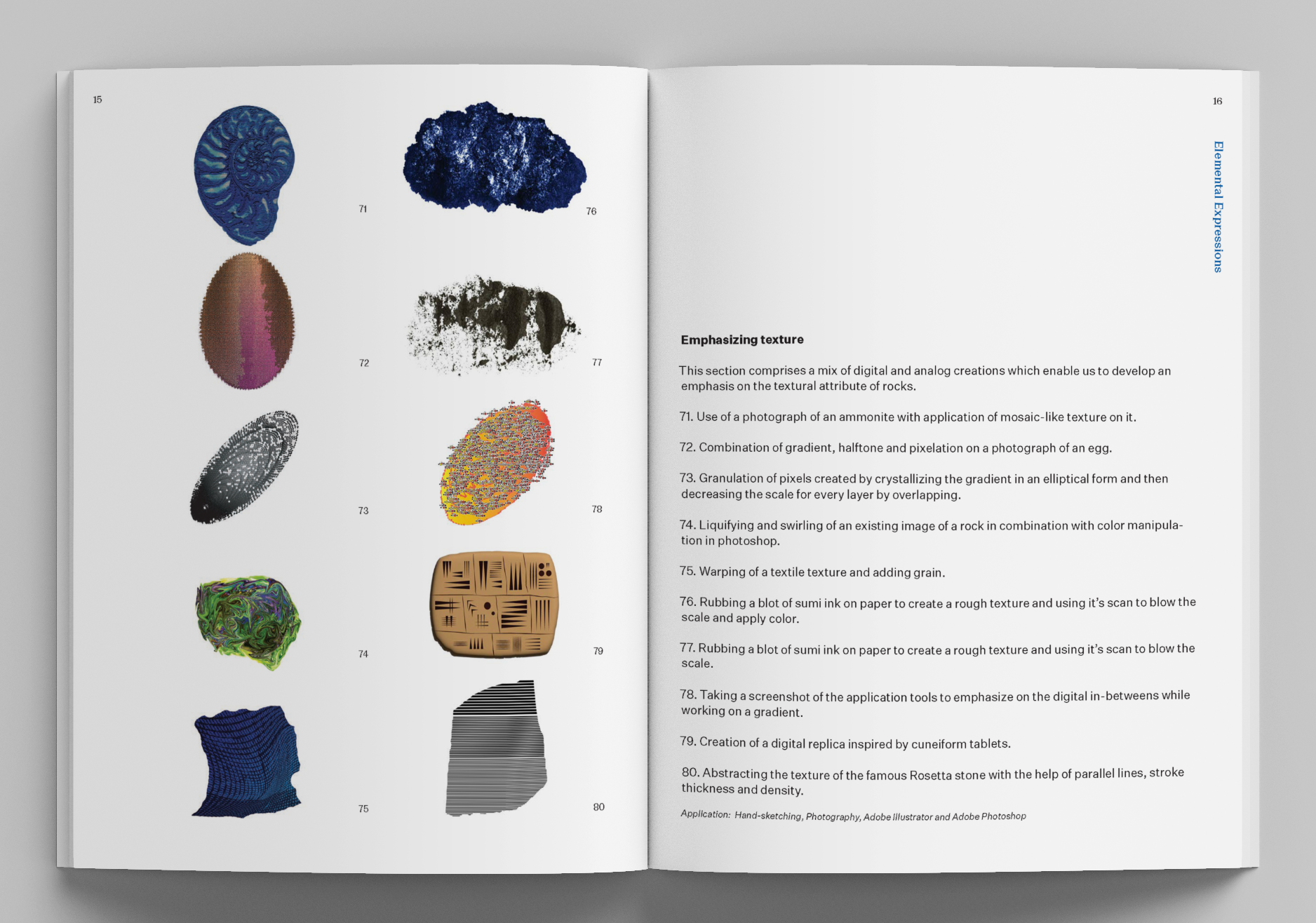
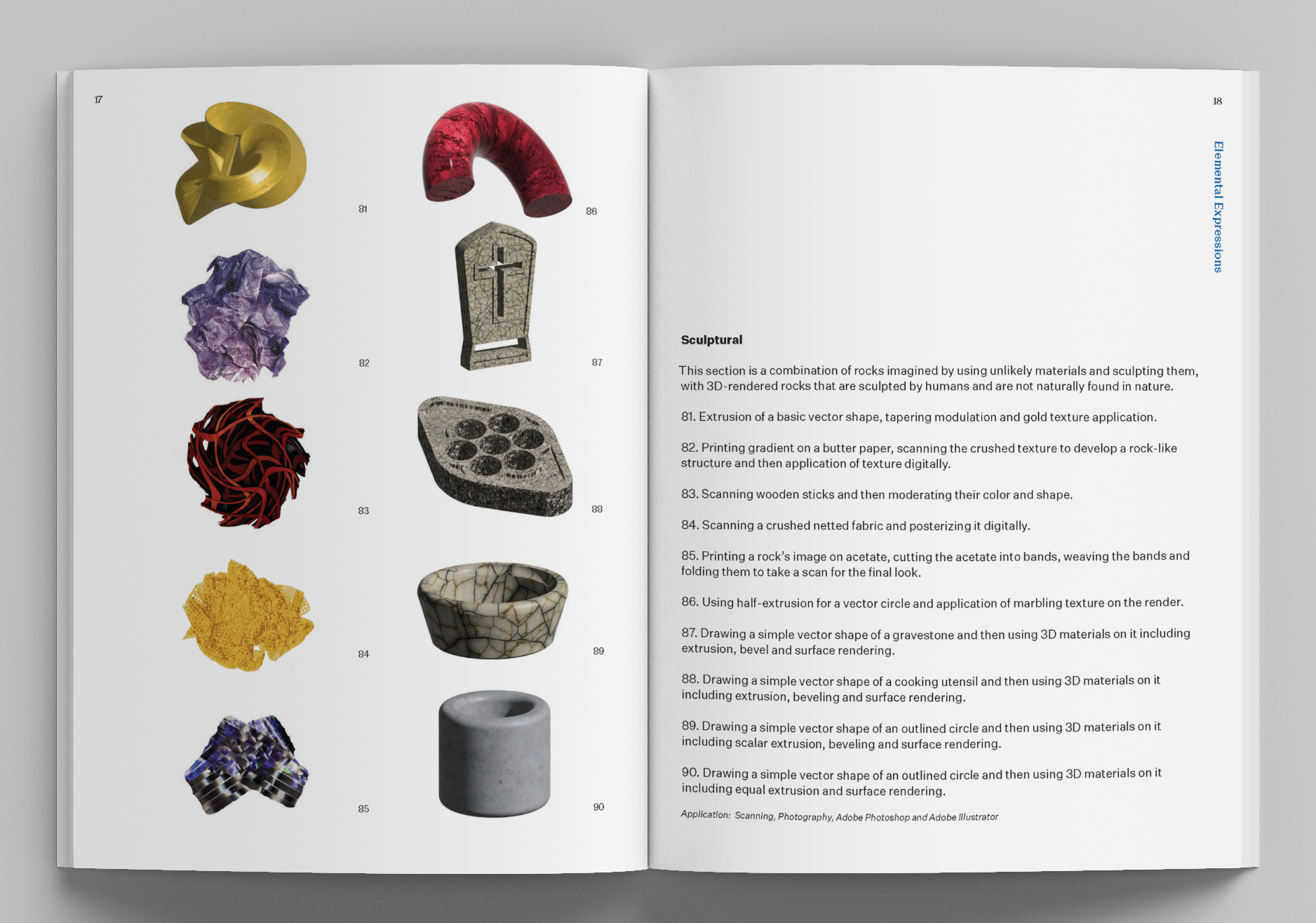

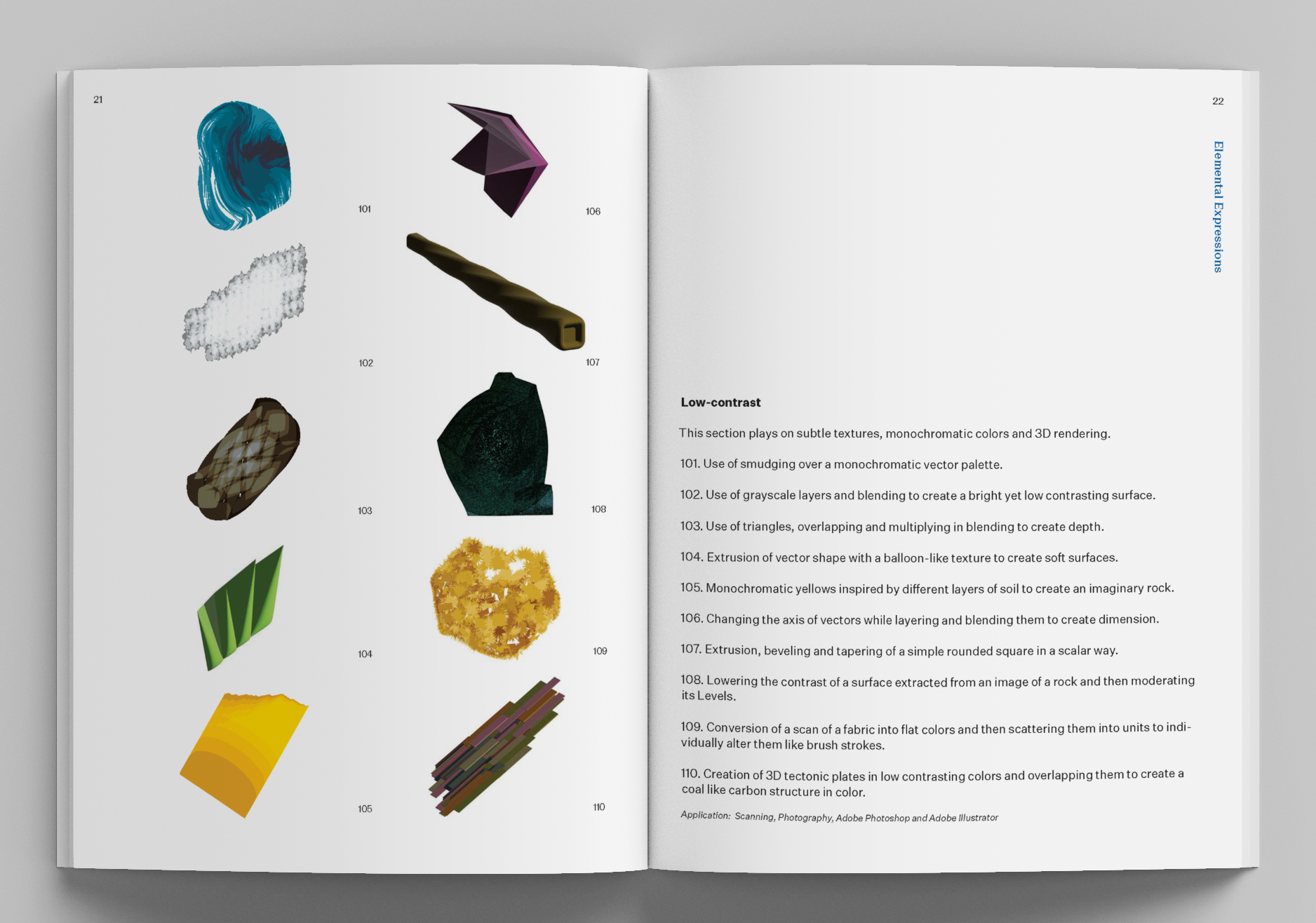



Individual Rocks








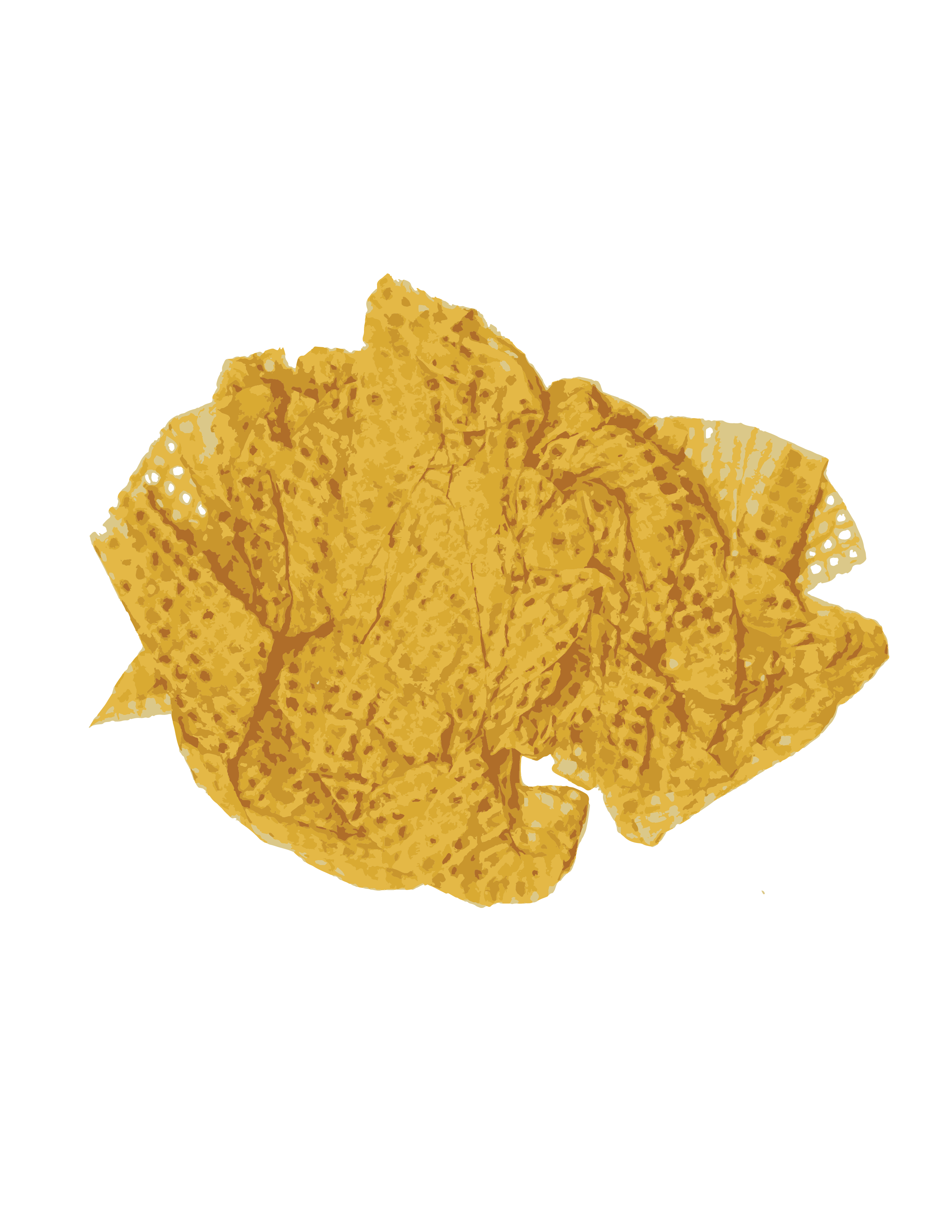
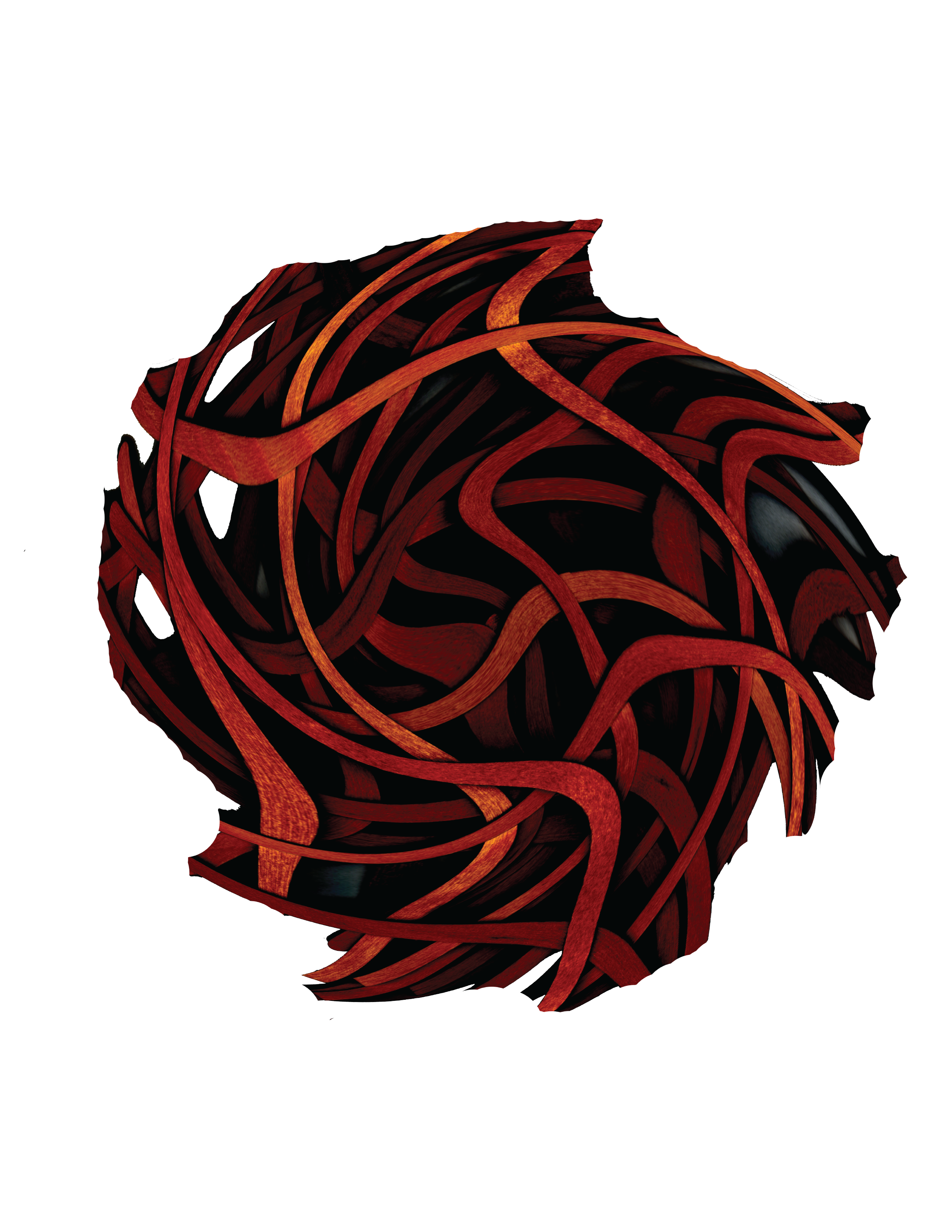


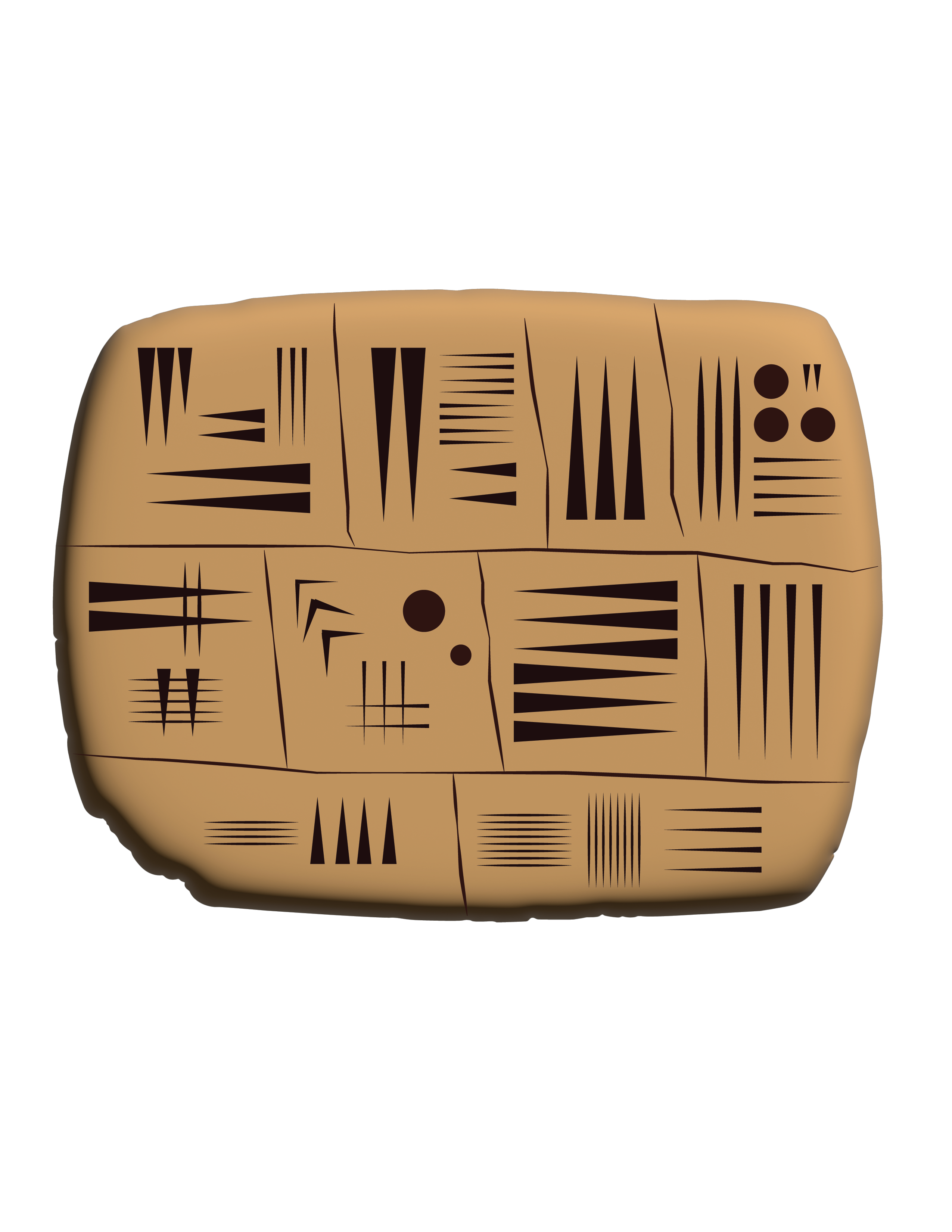

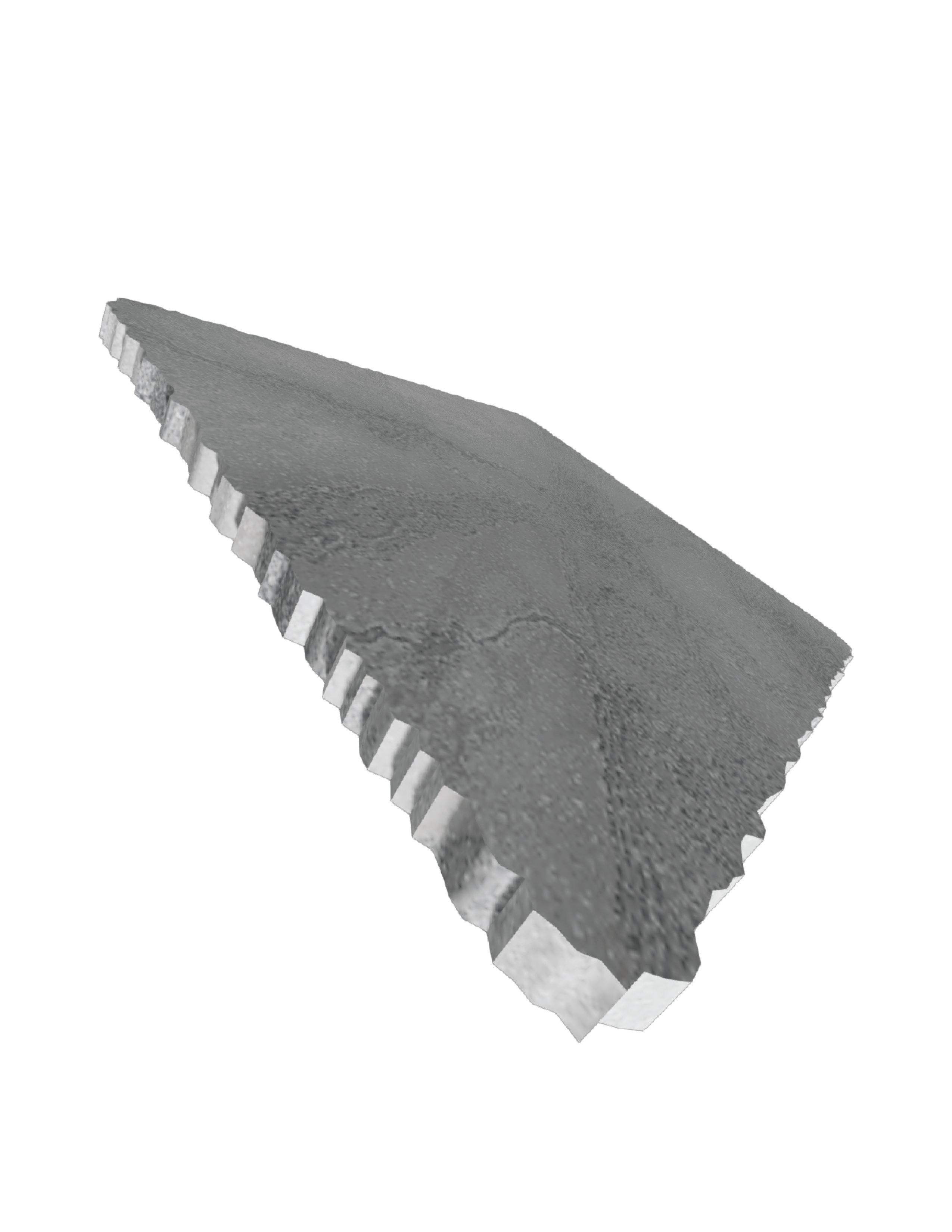

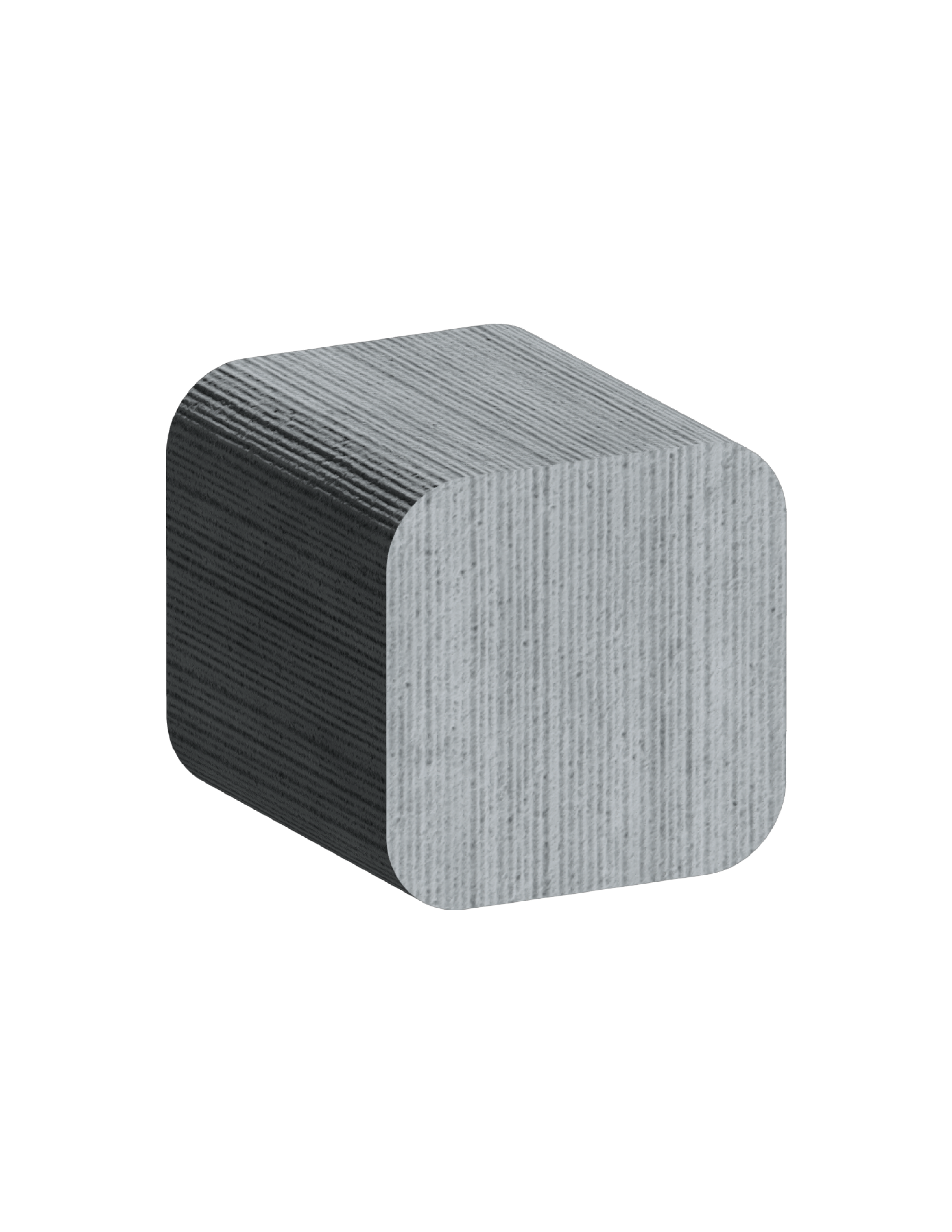
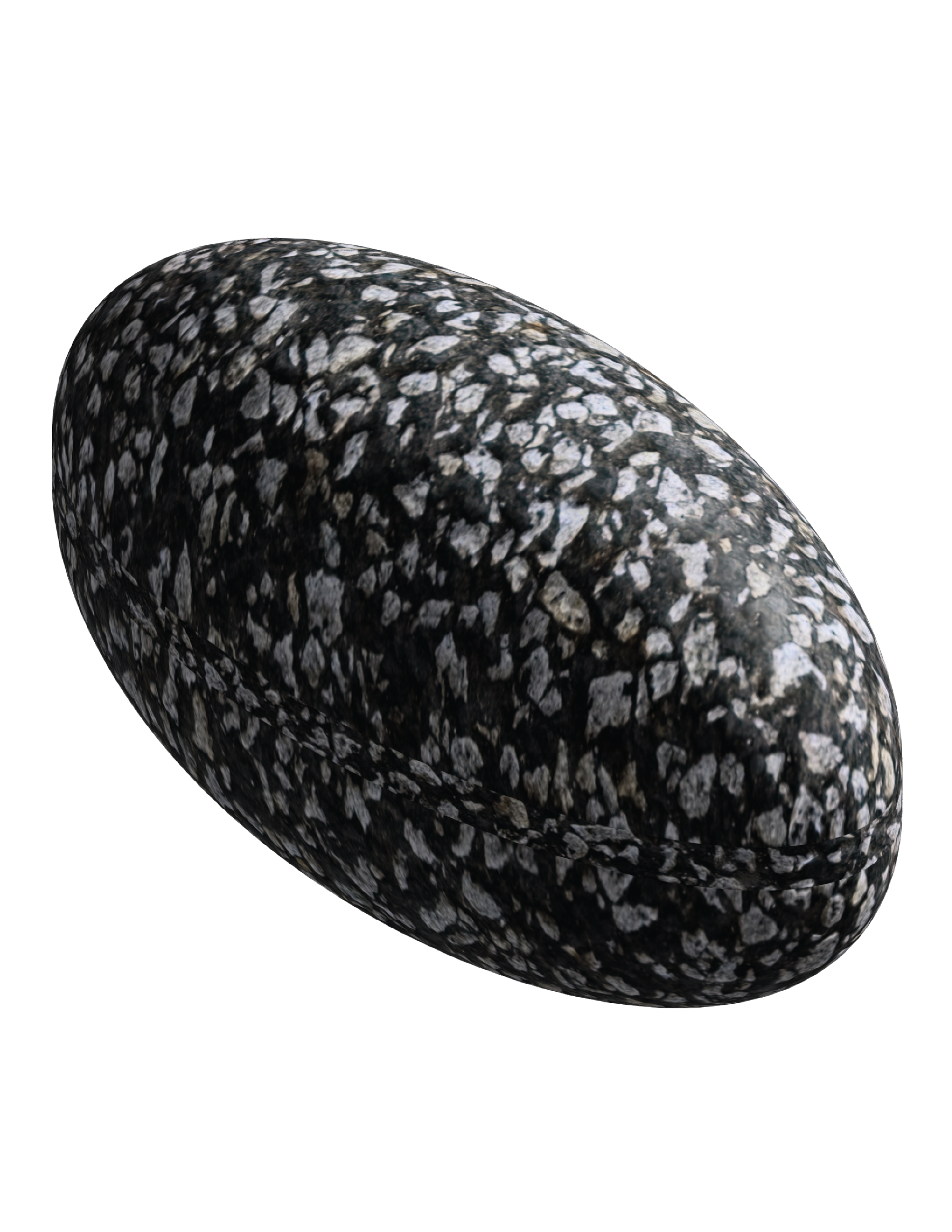






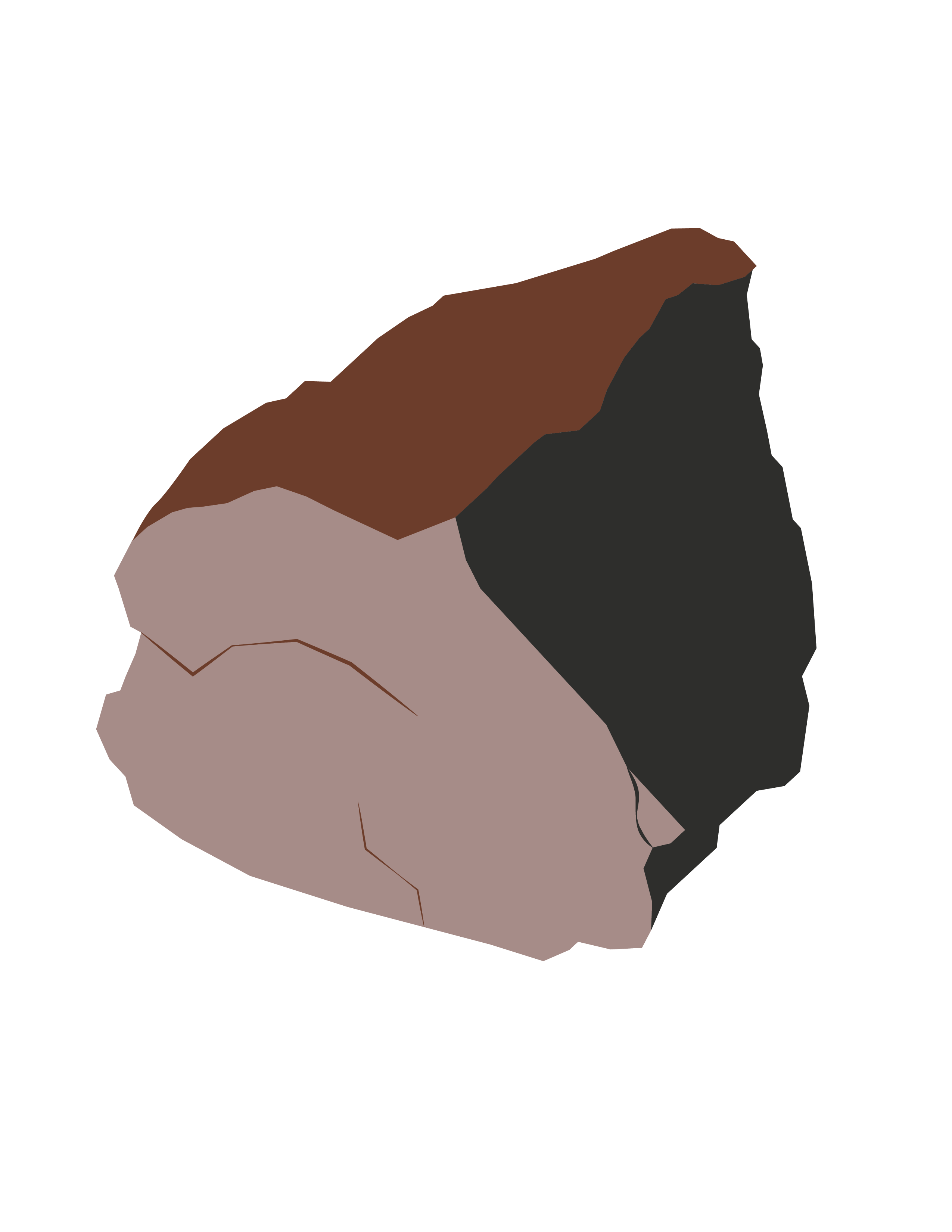
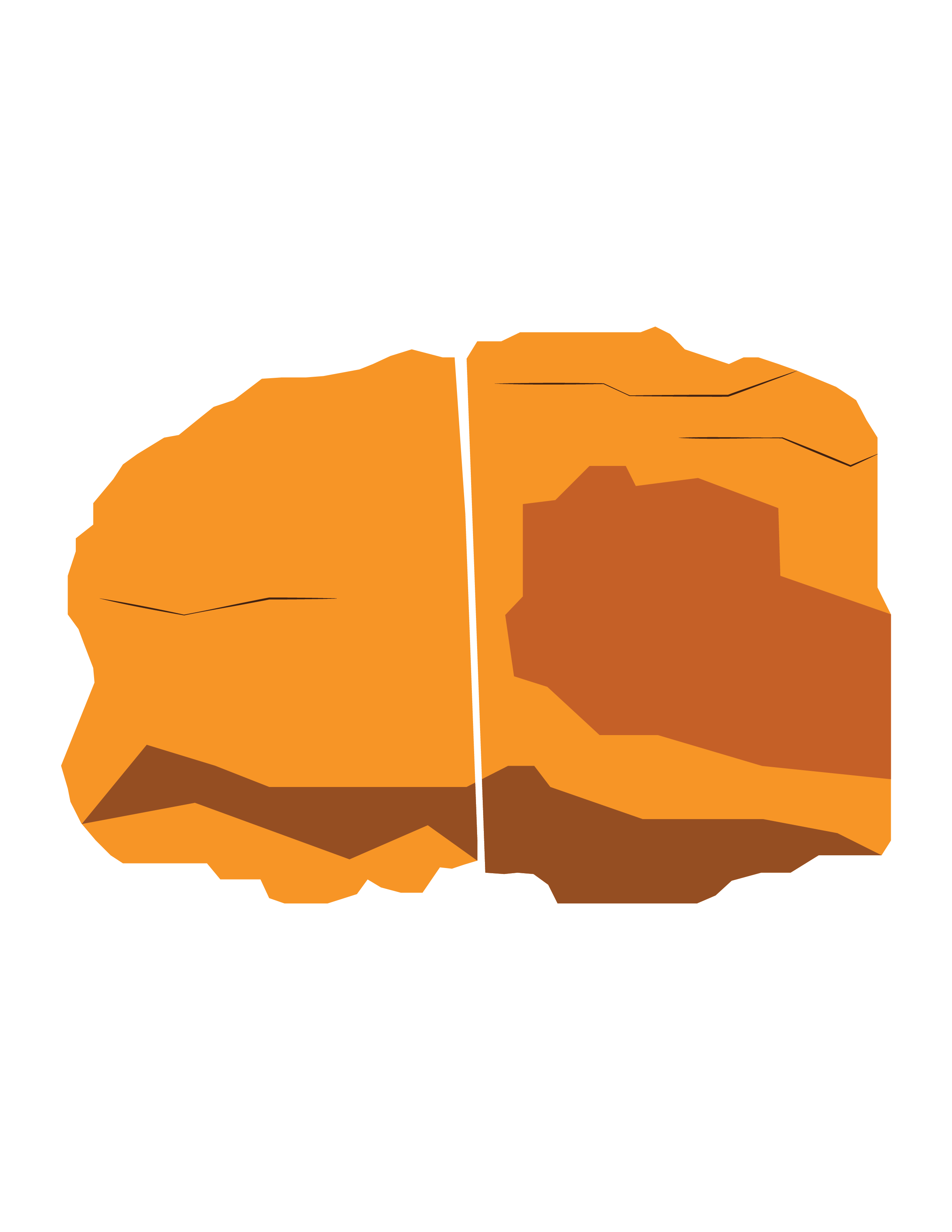



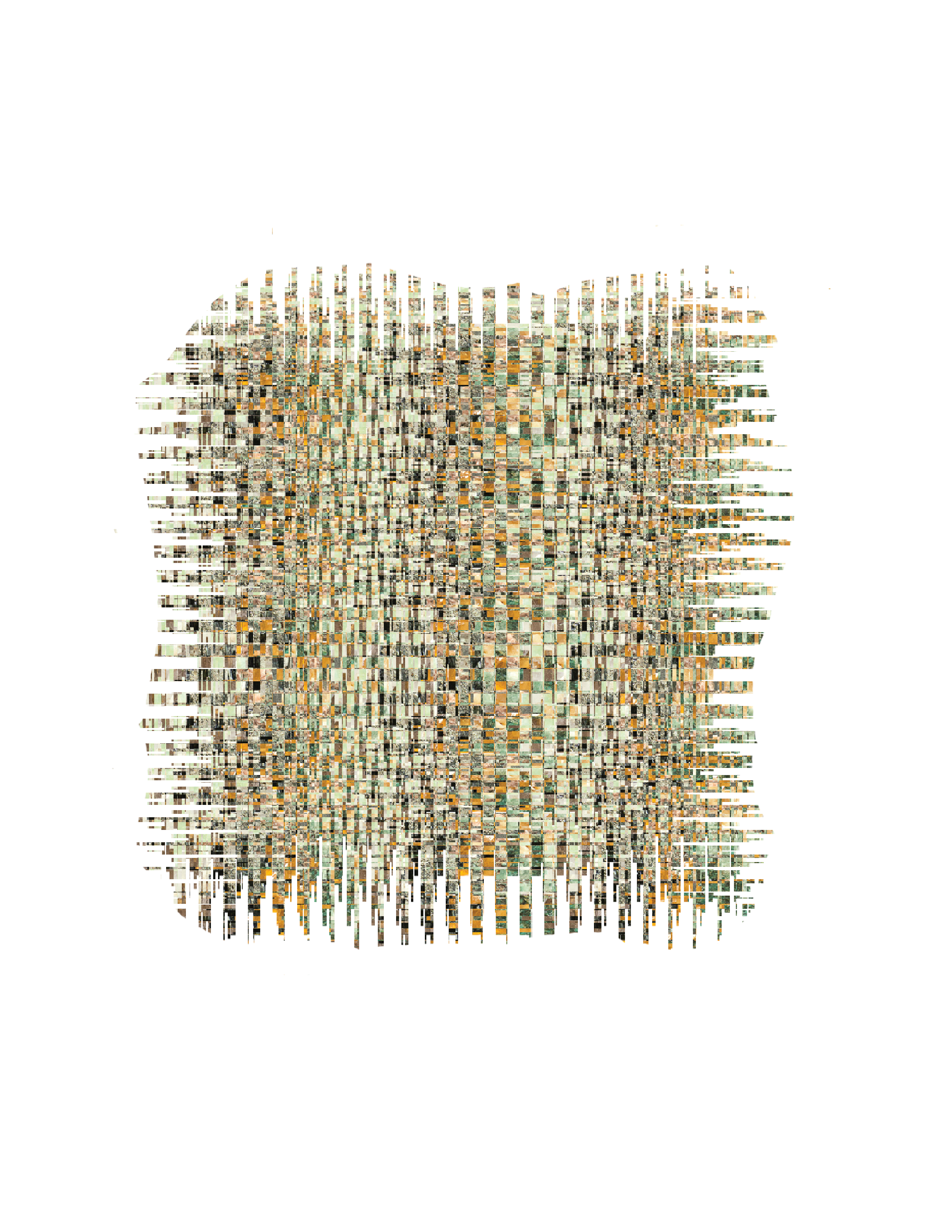



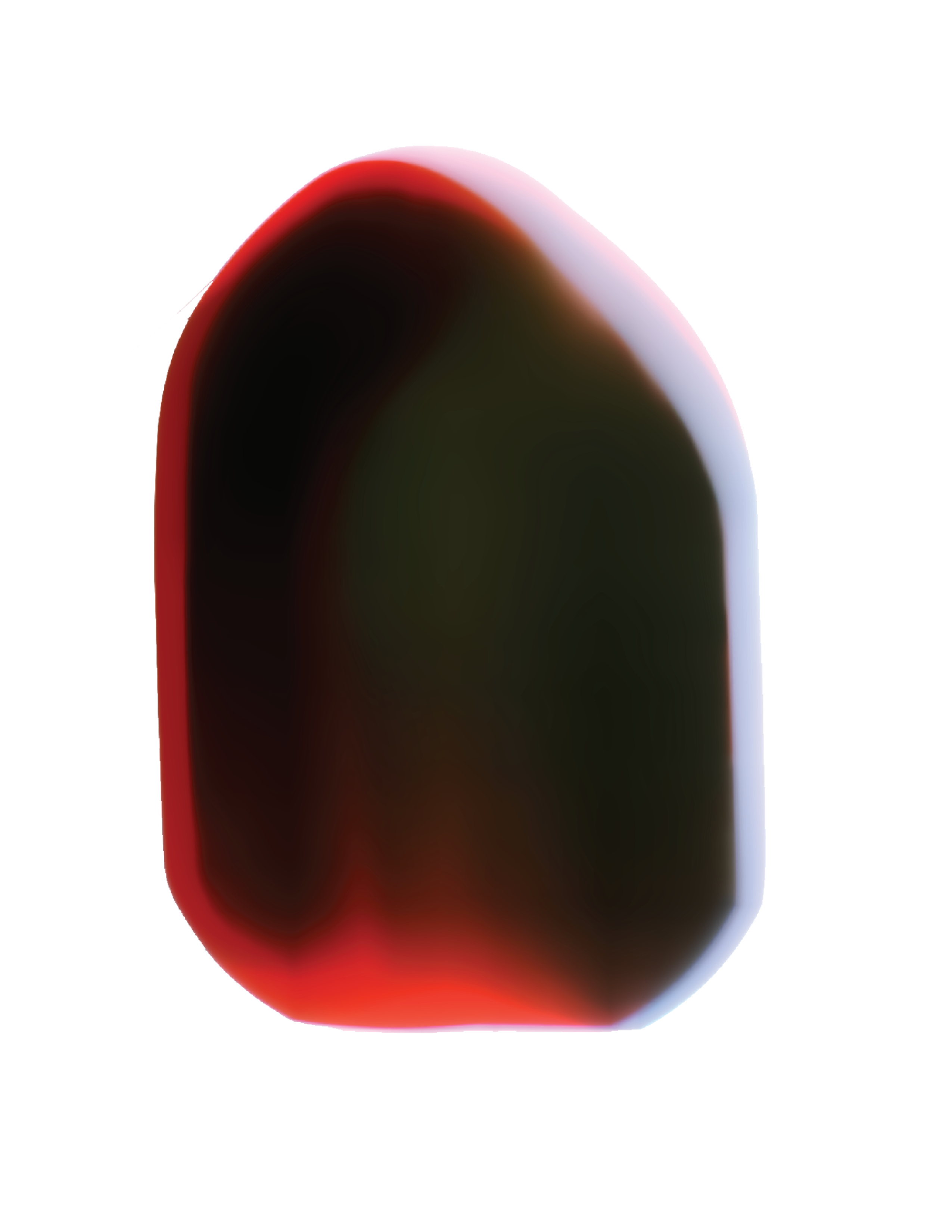

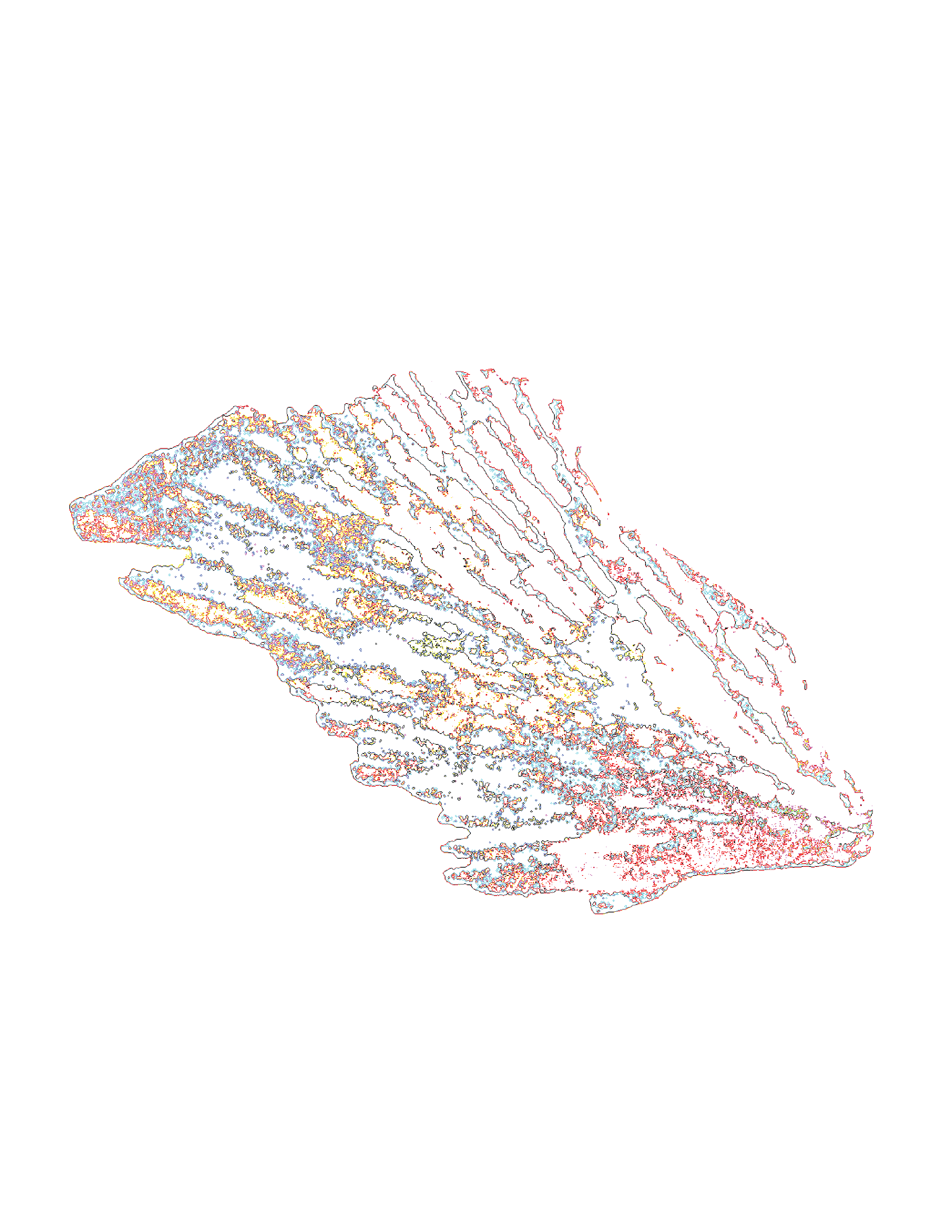
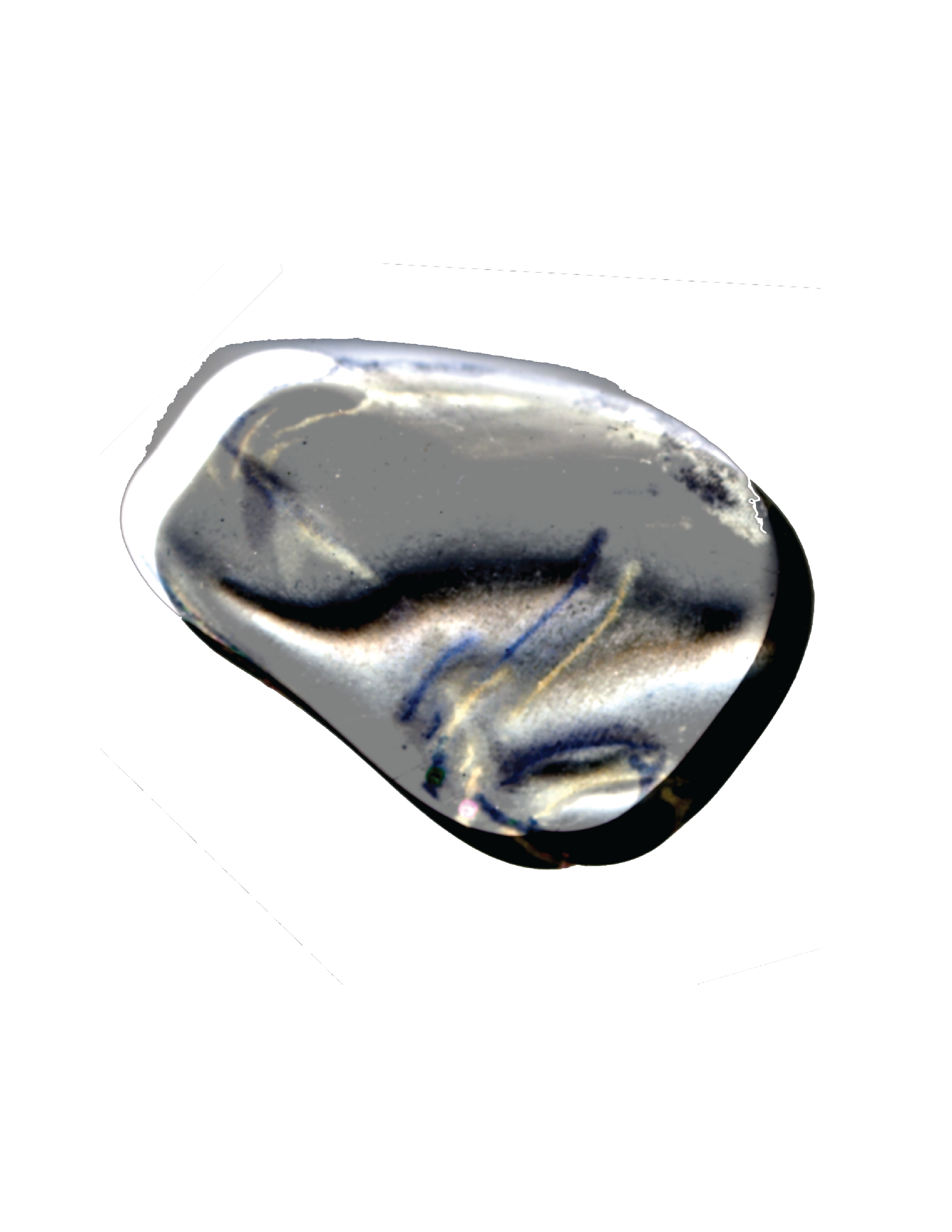









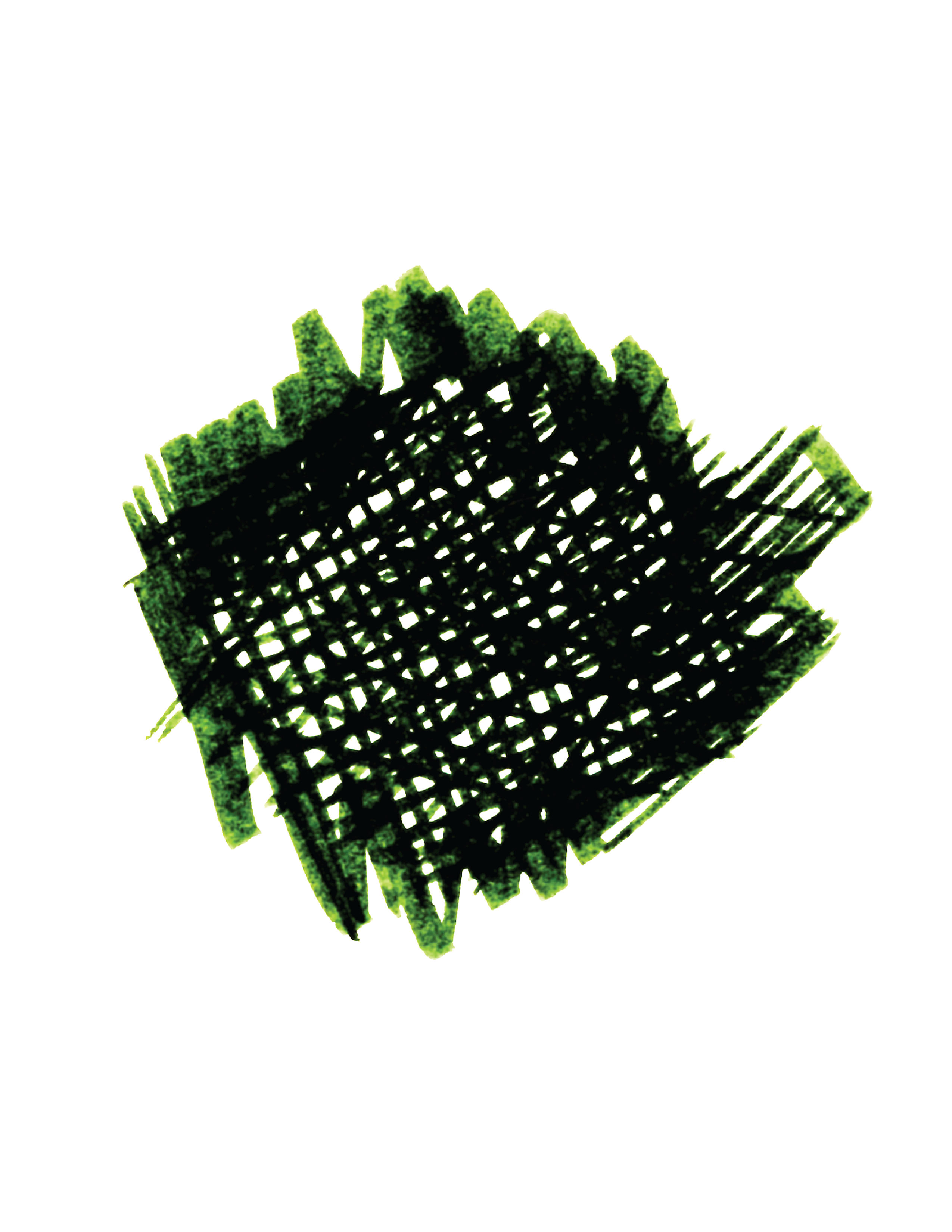



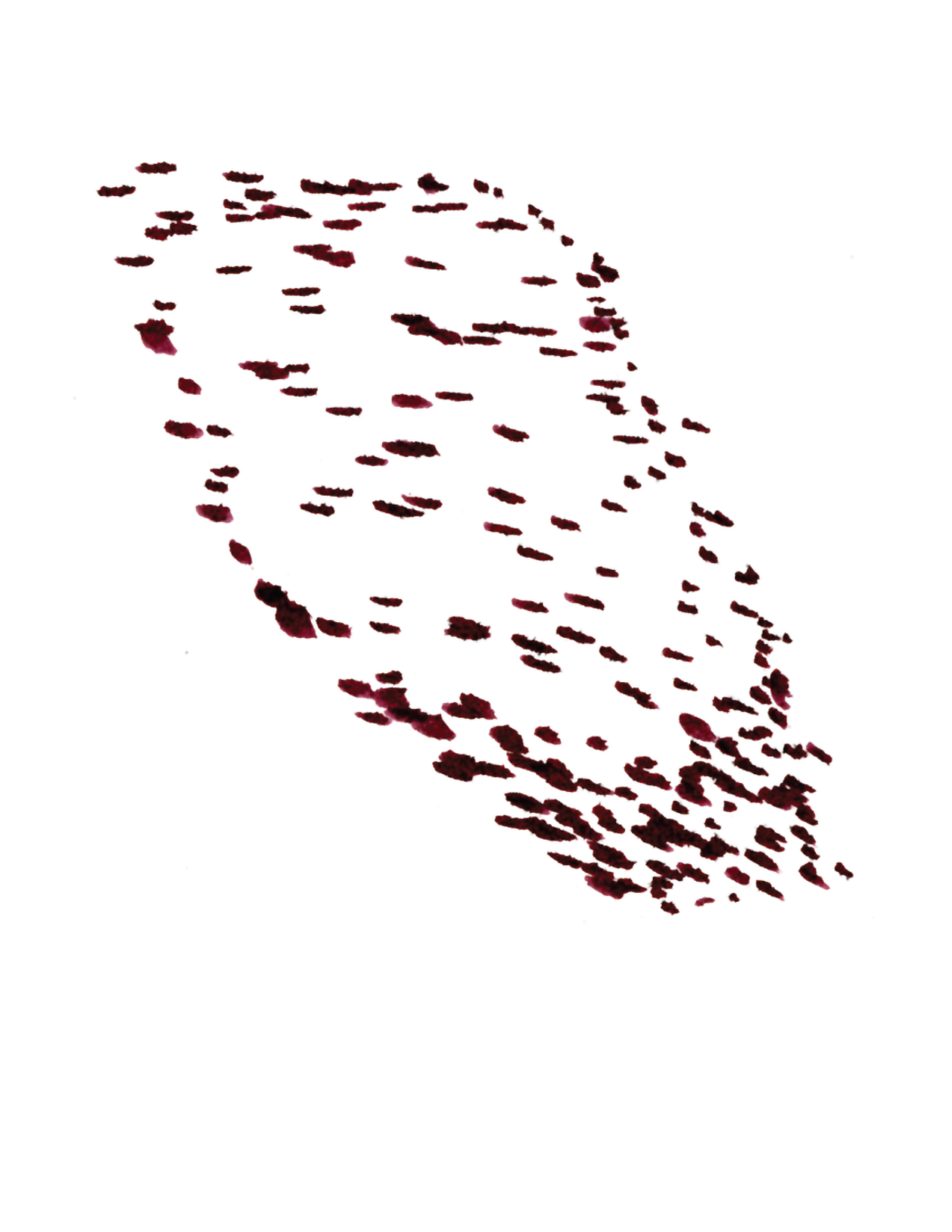
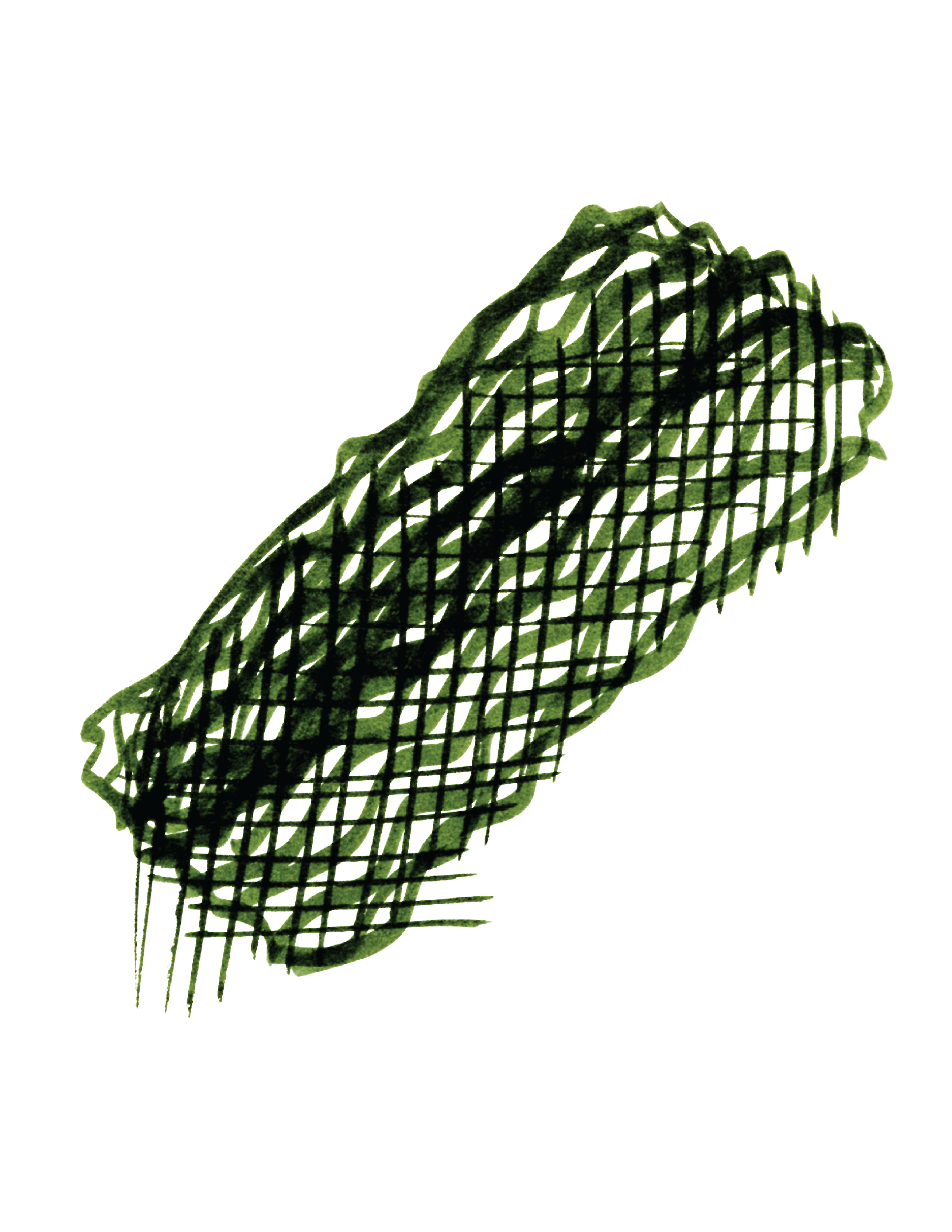
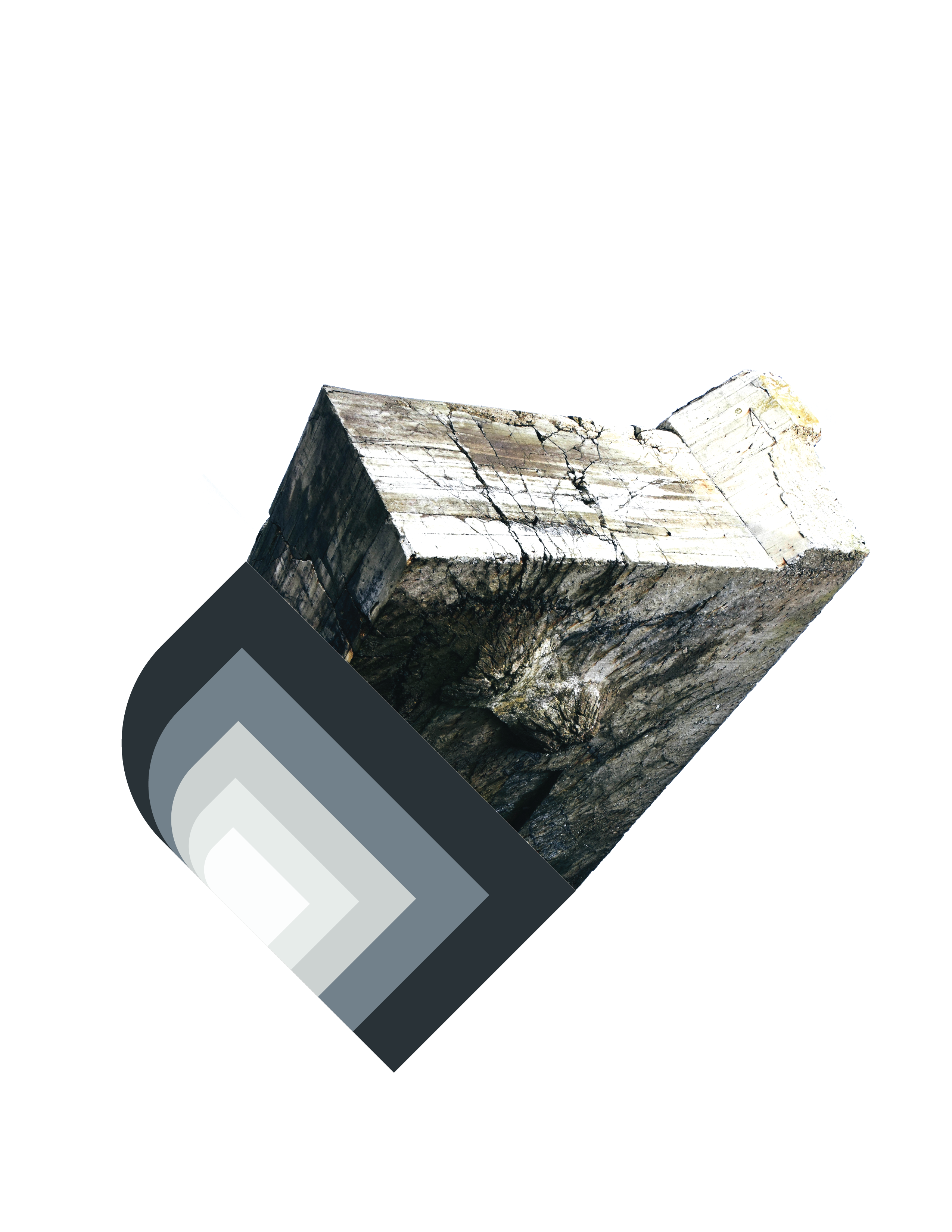



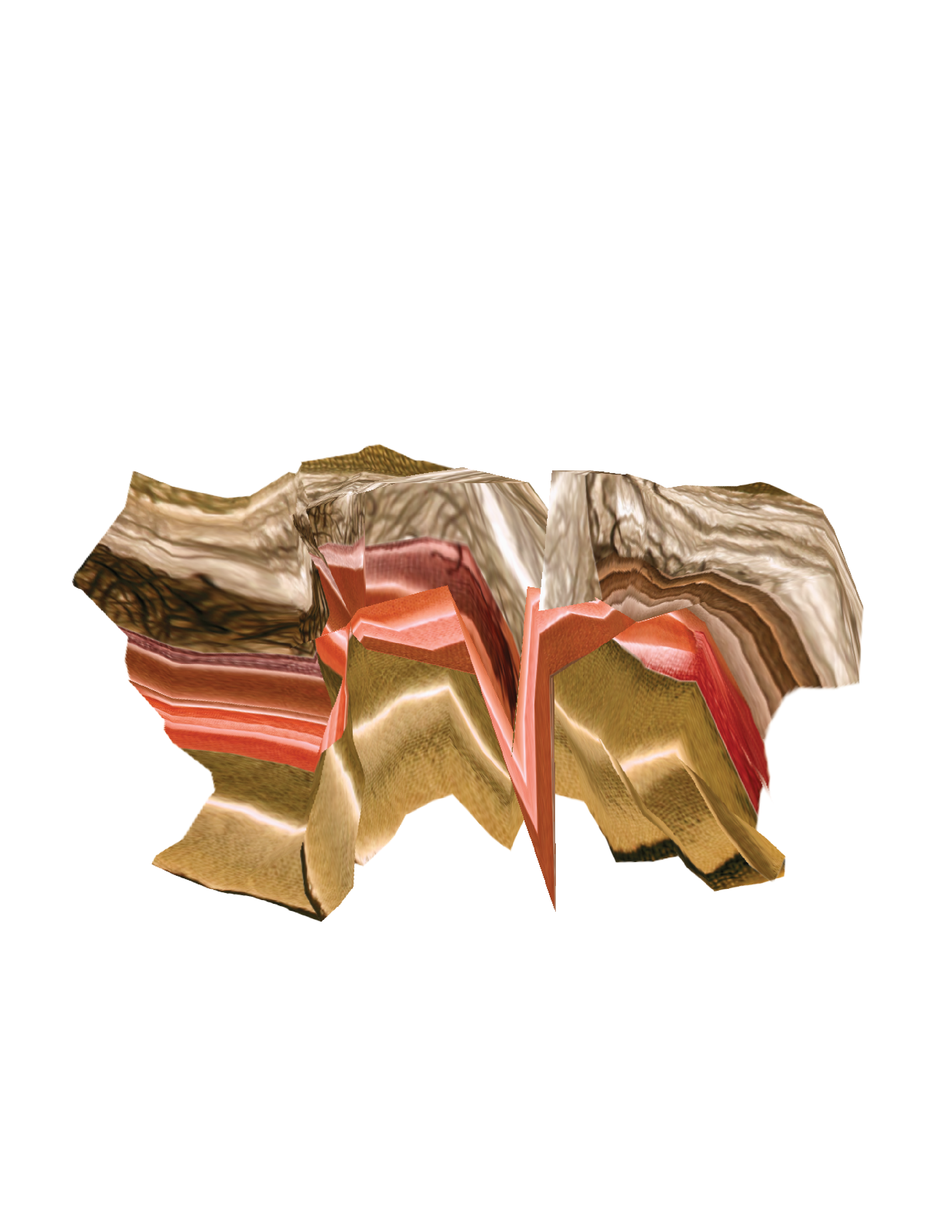

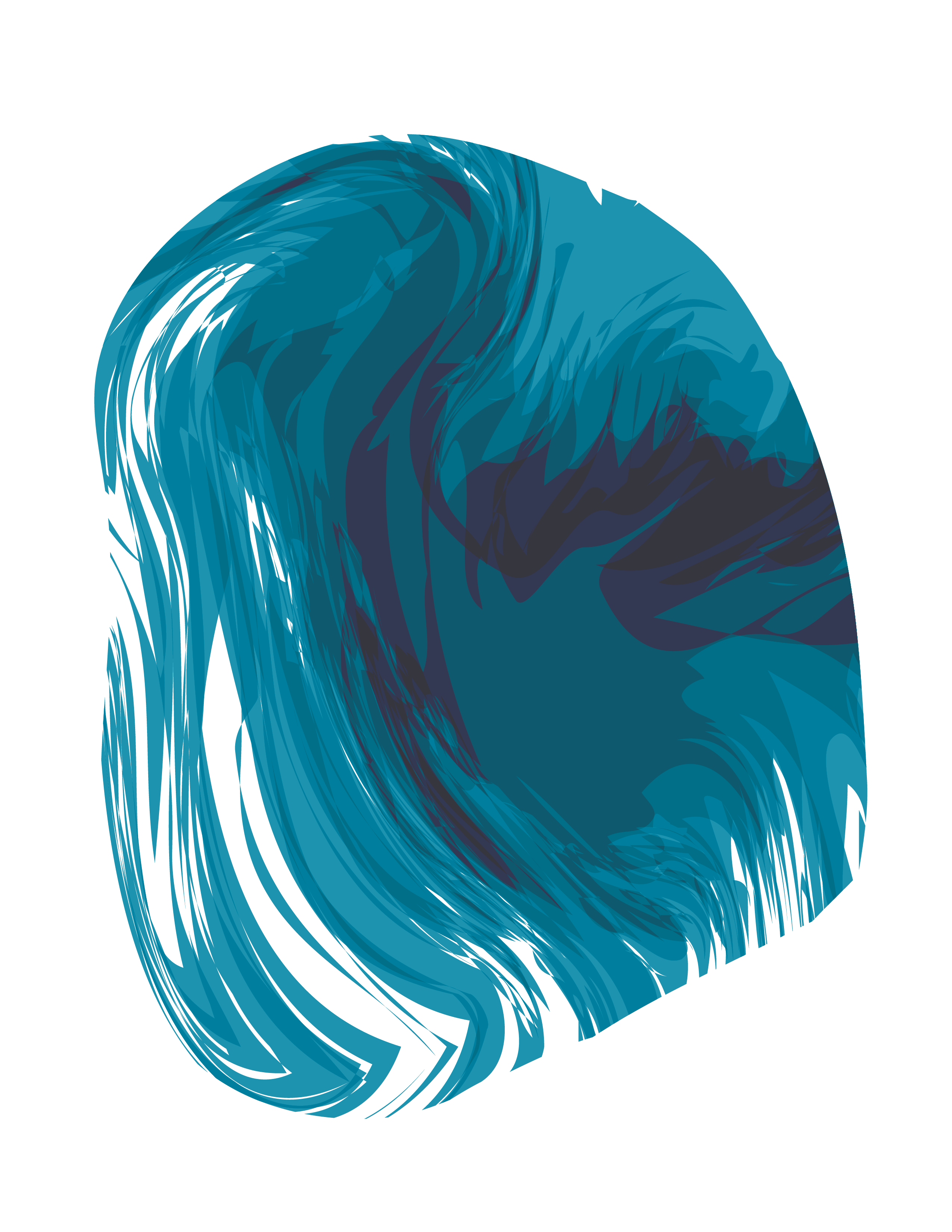

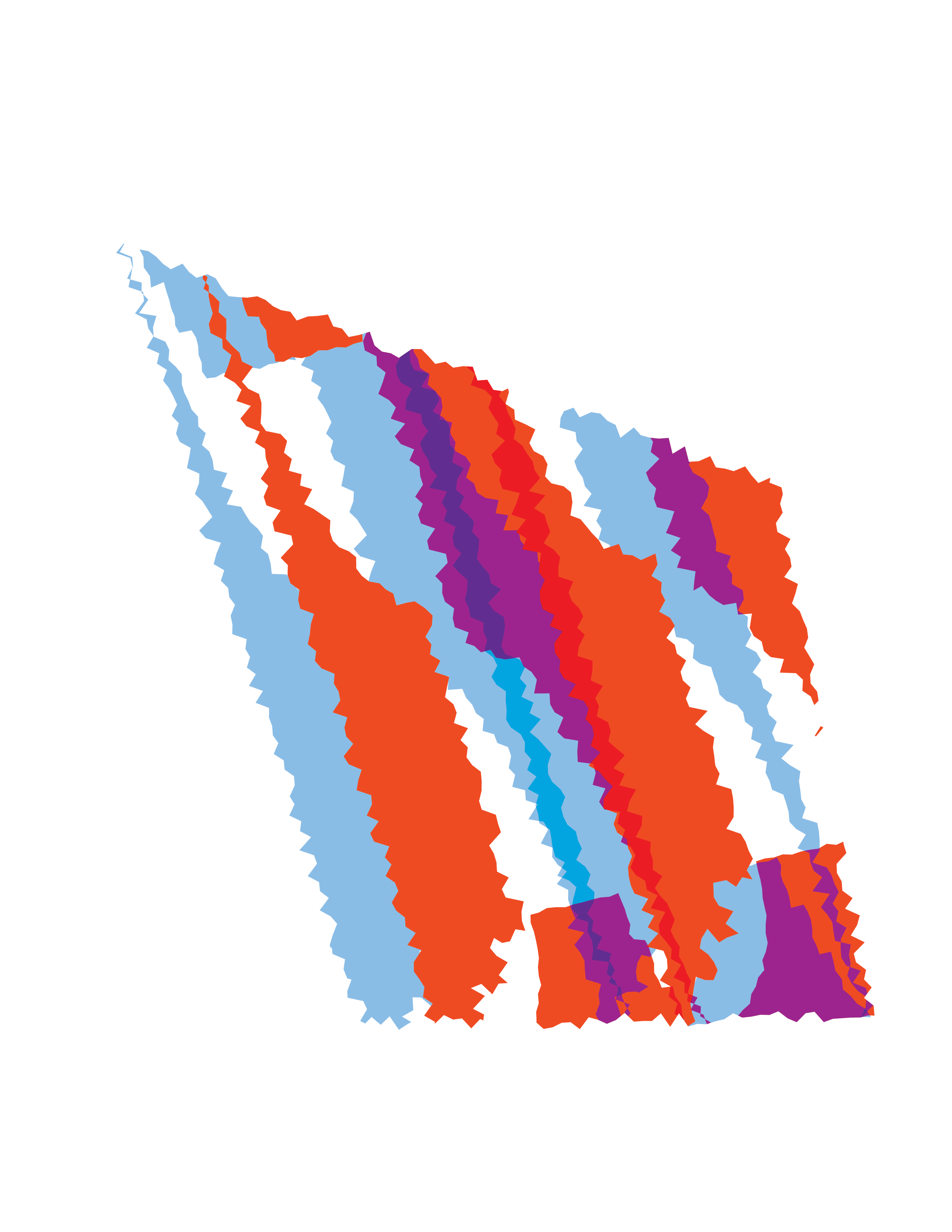



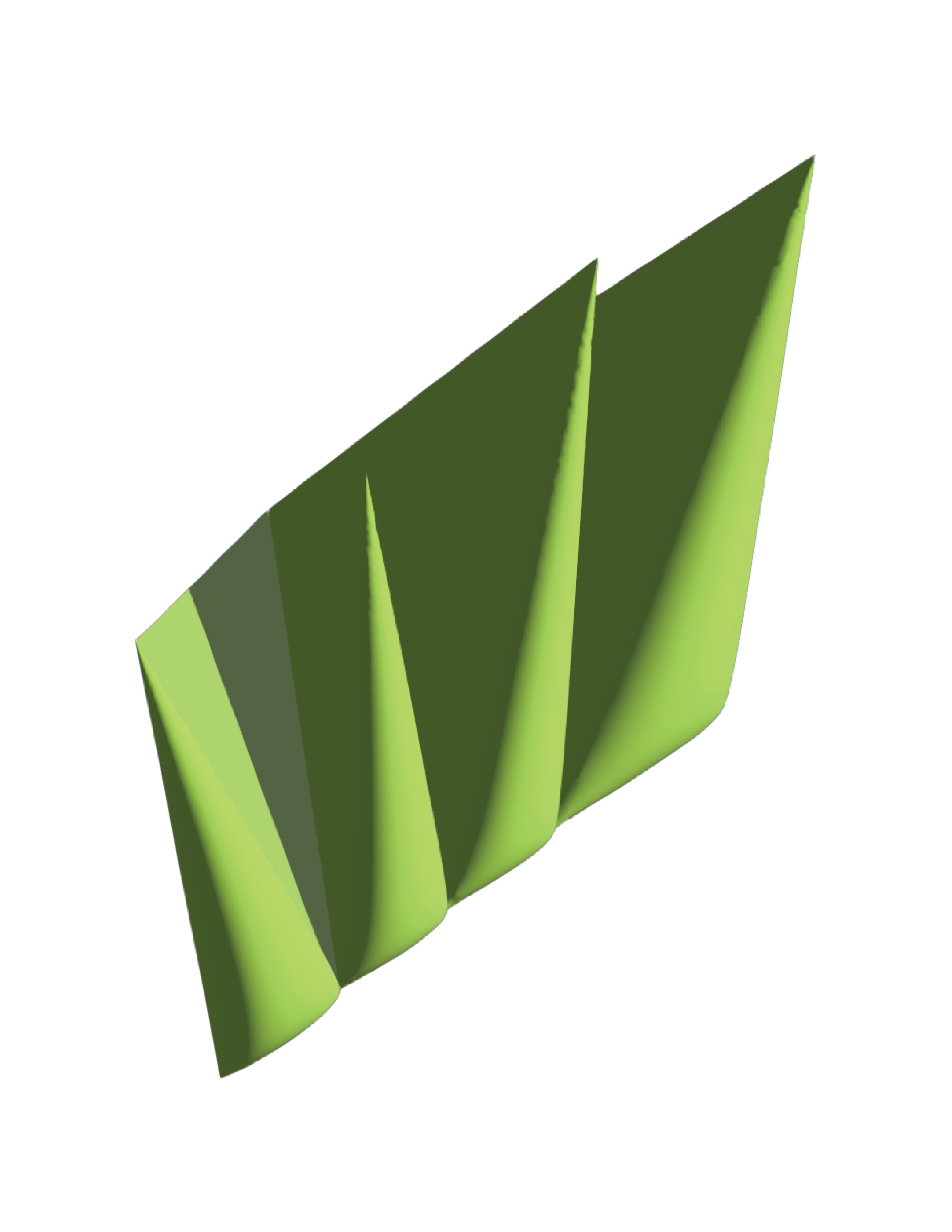


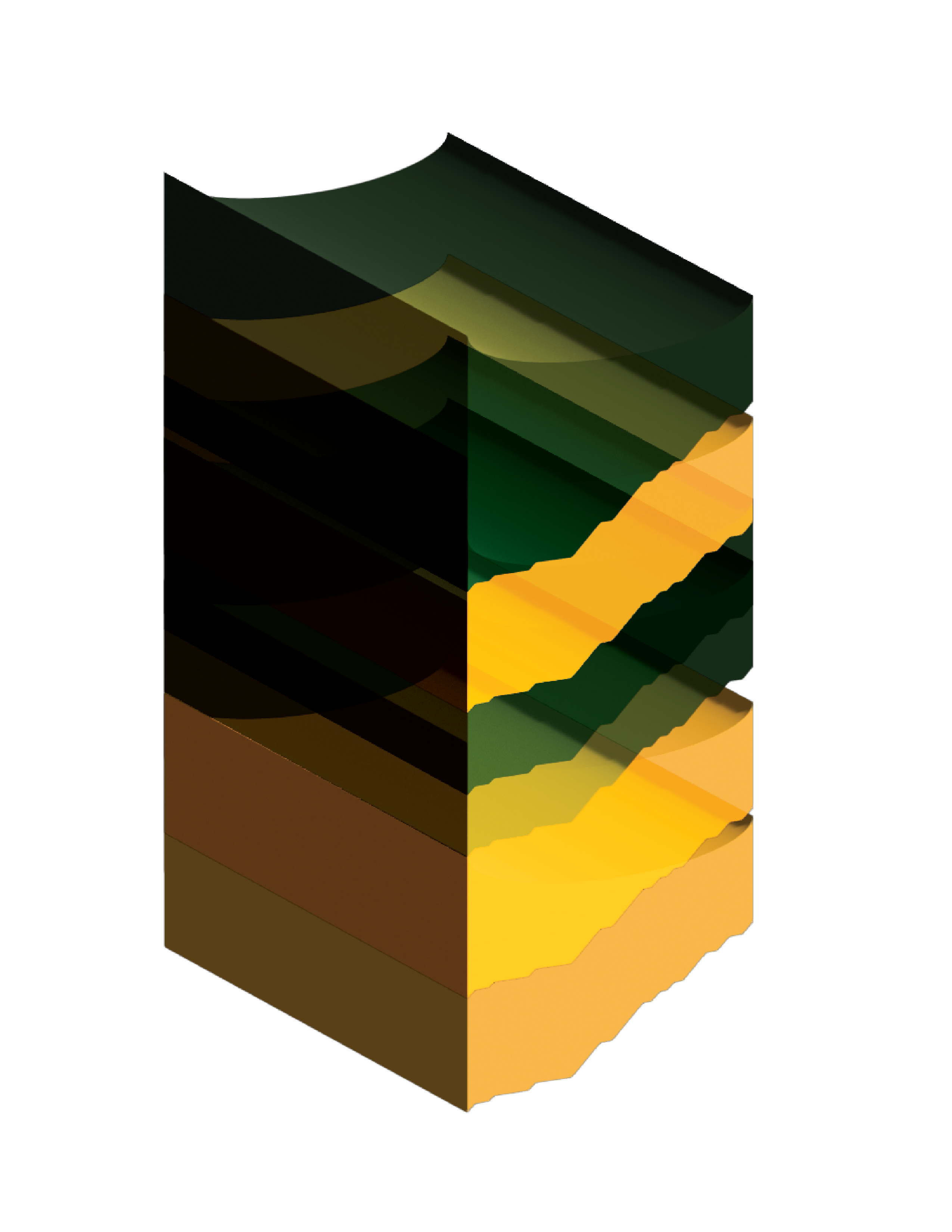

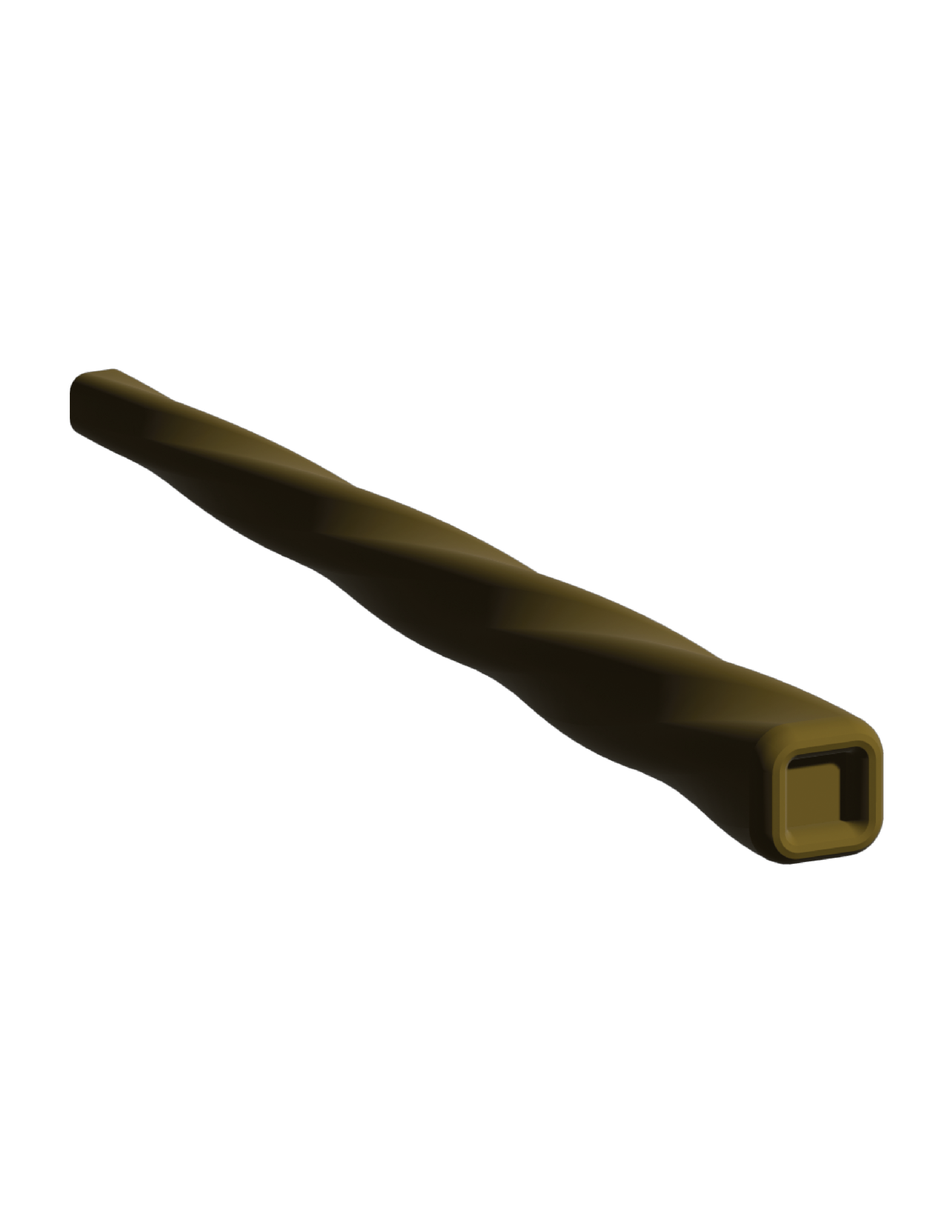



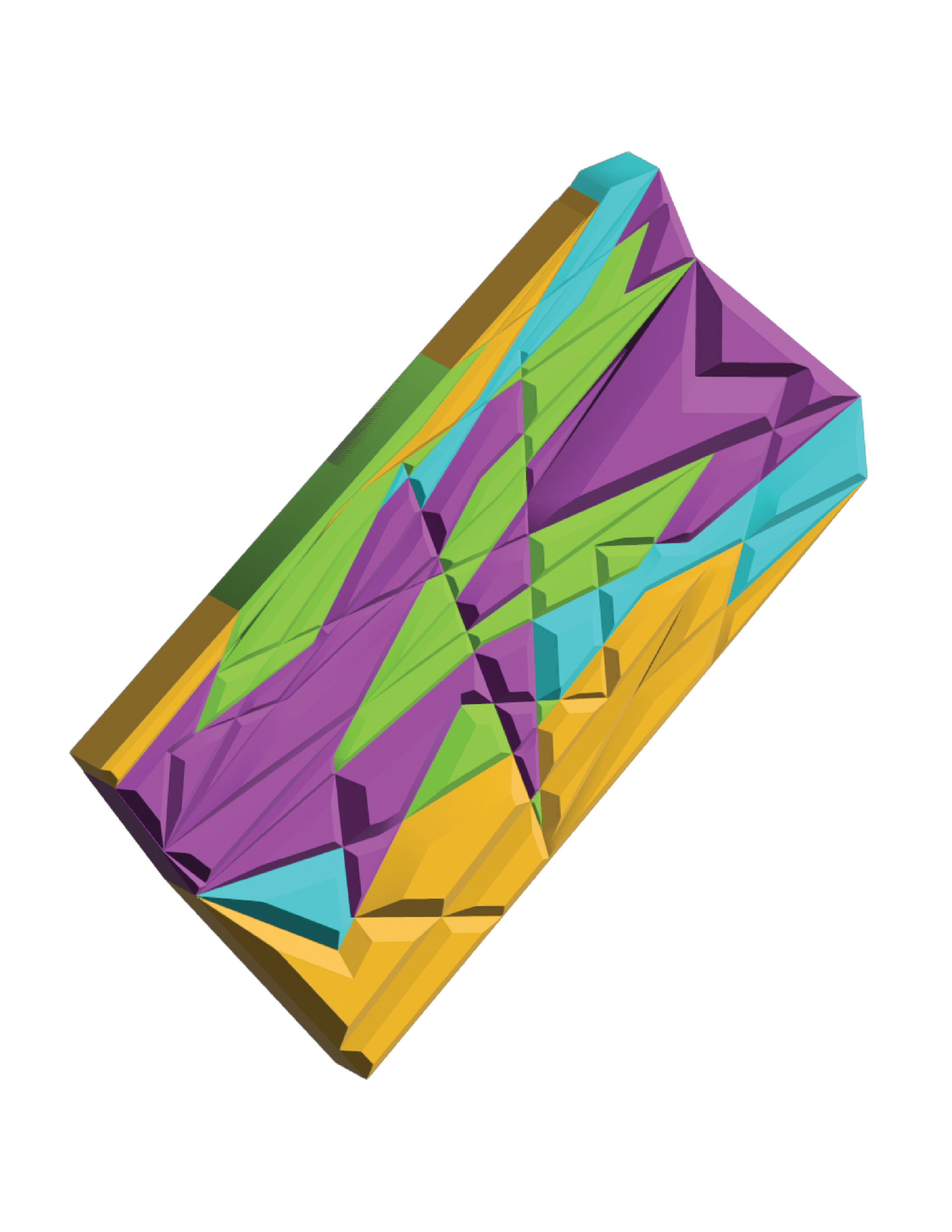



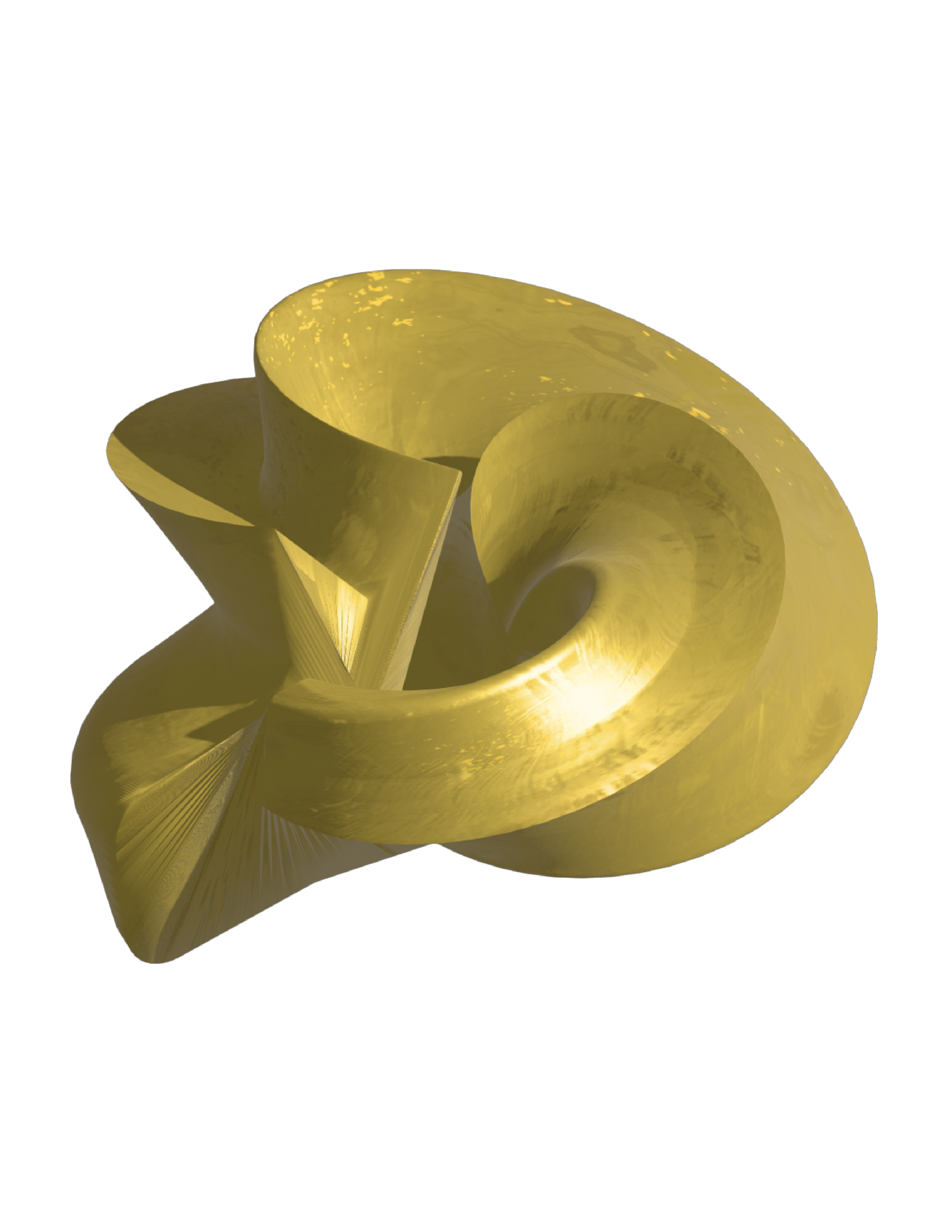














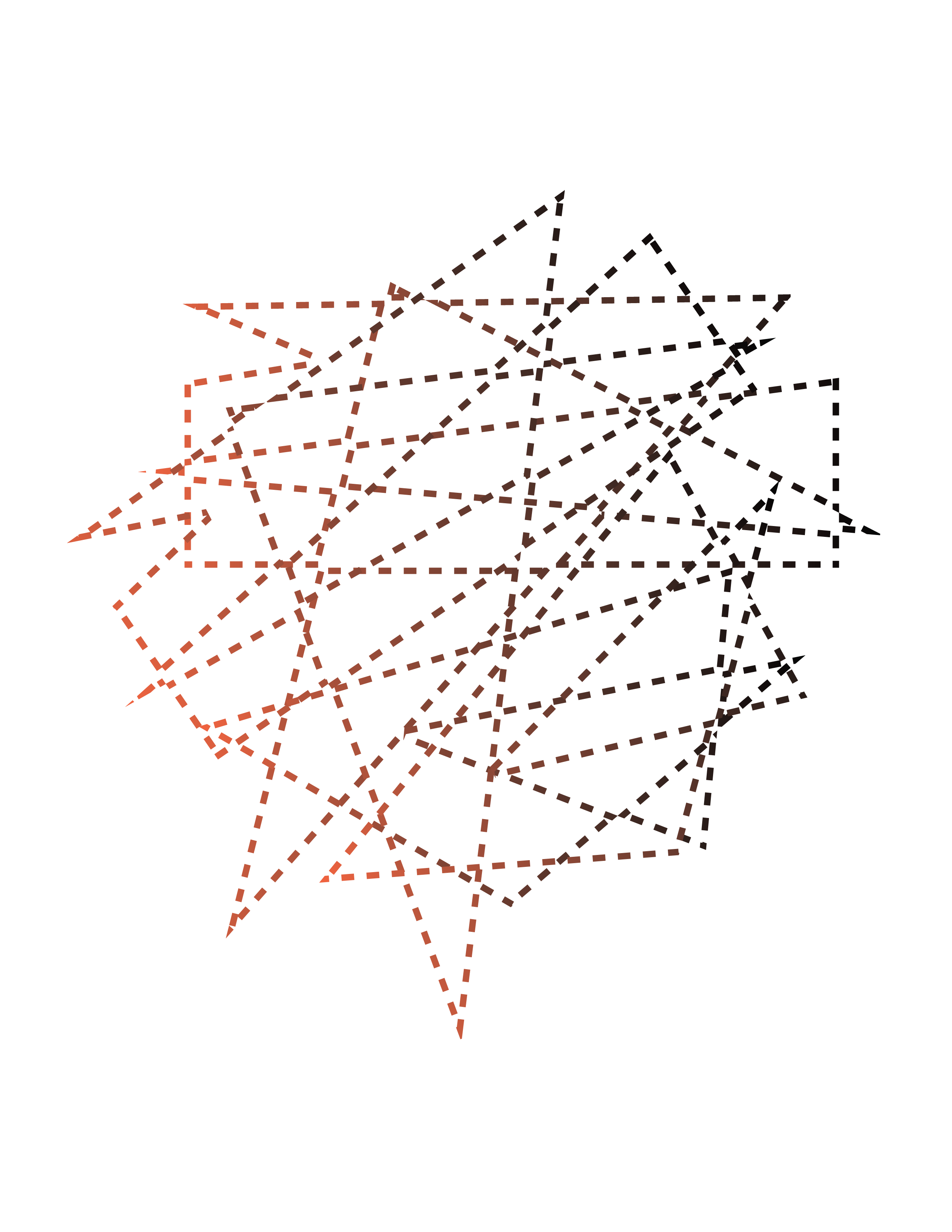










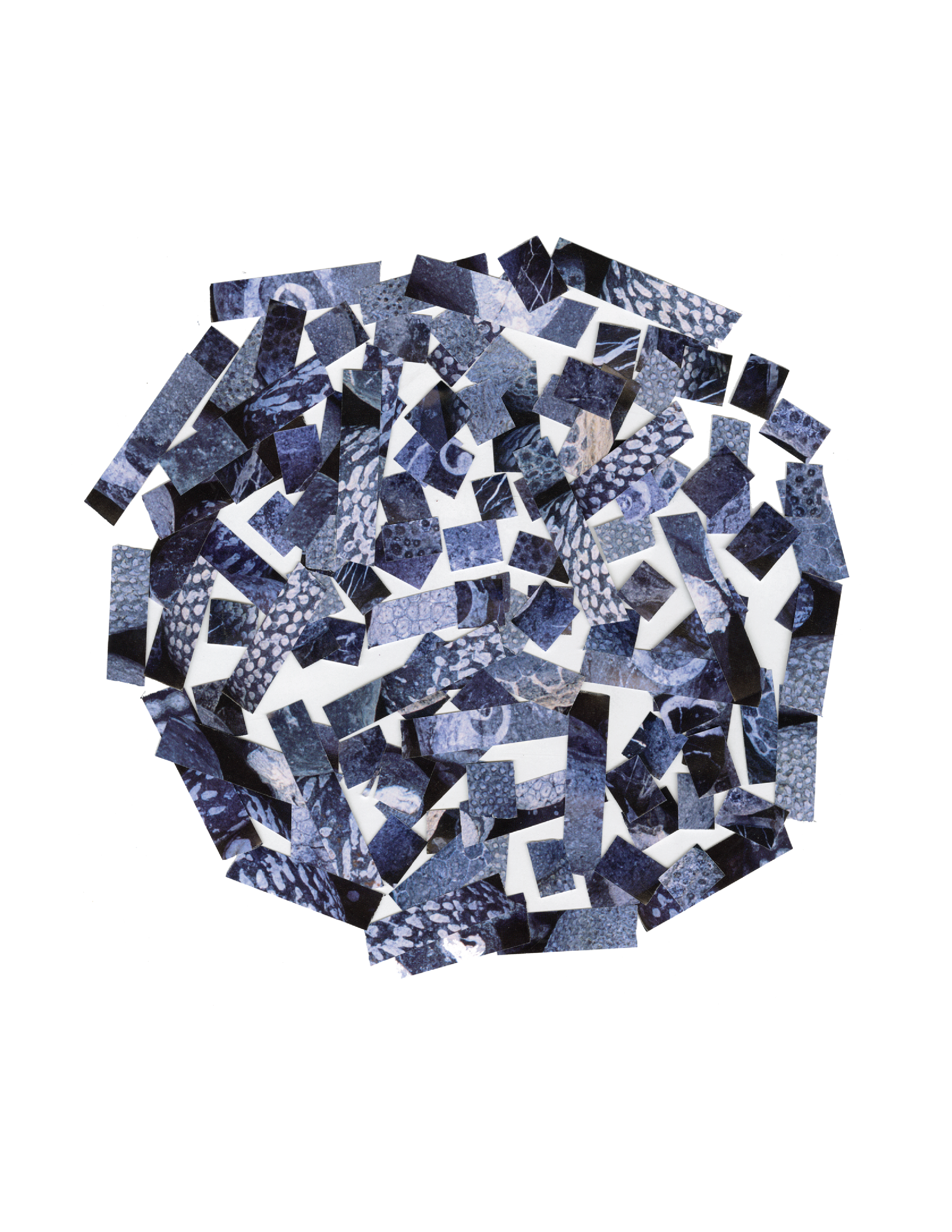




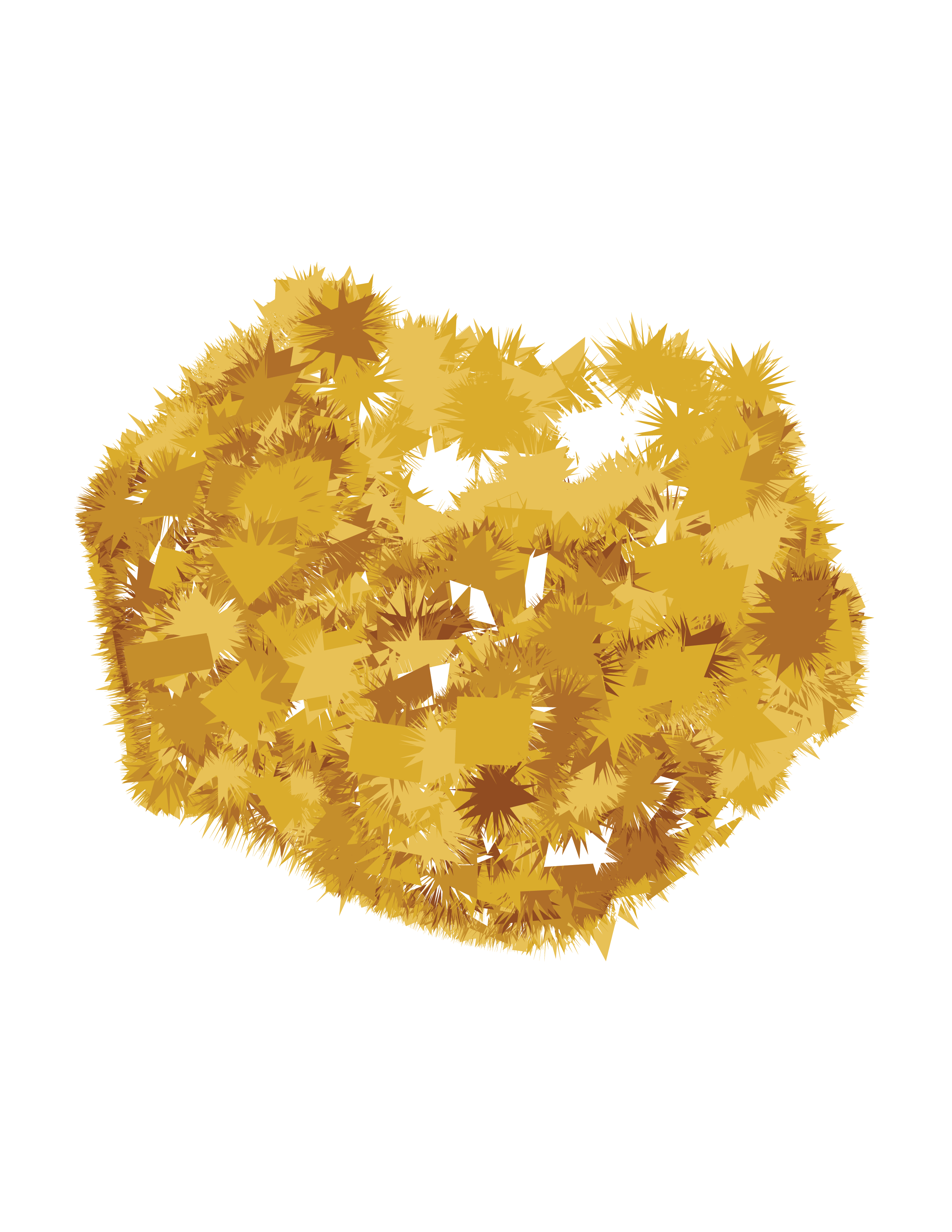
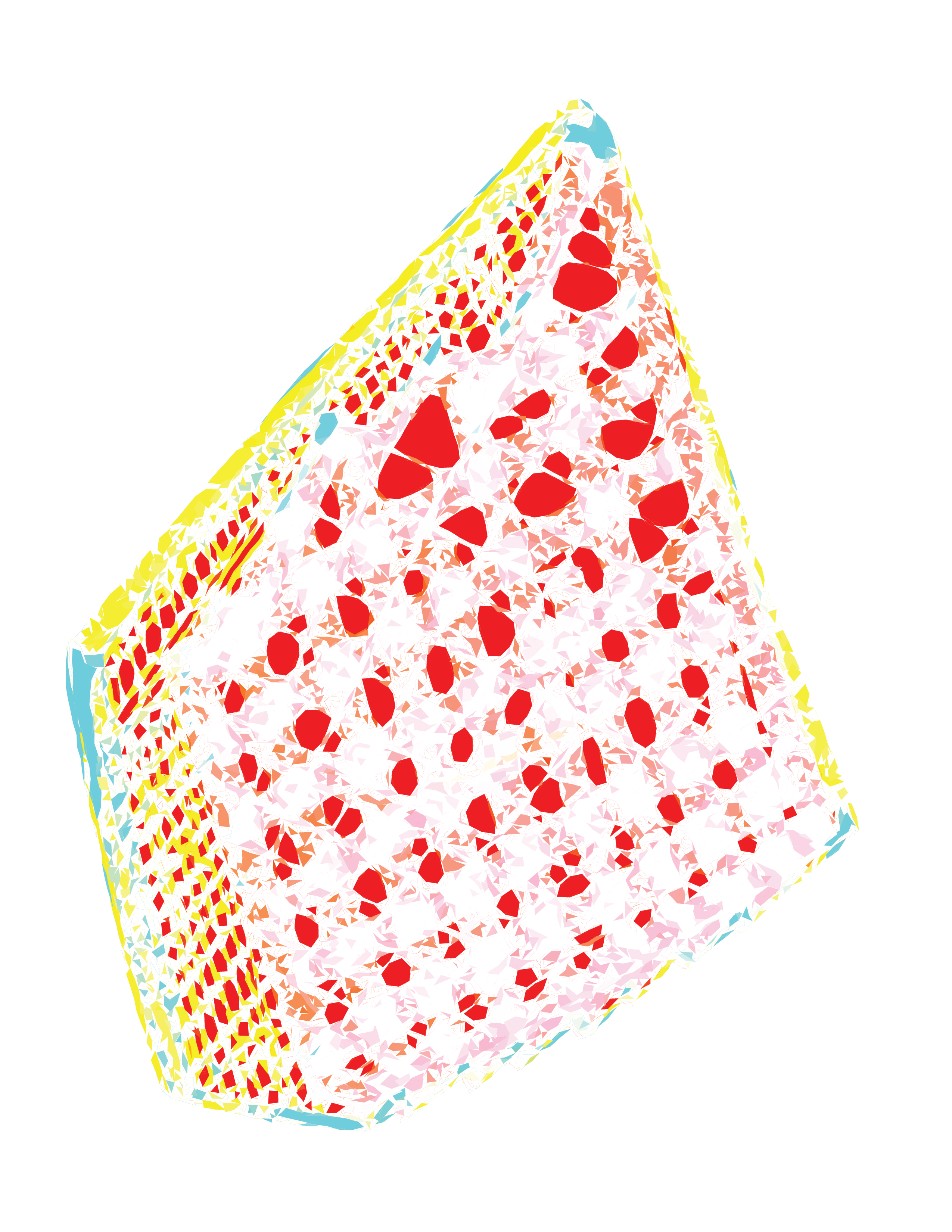



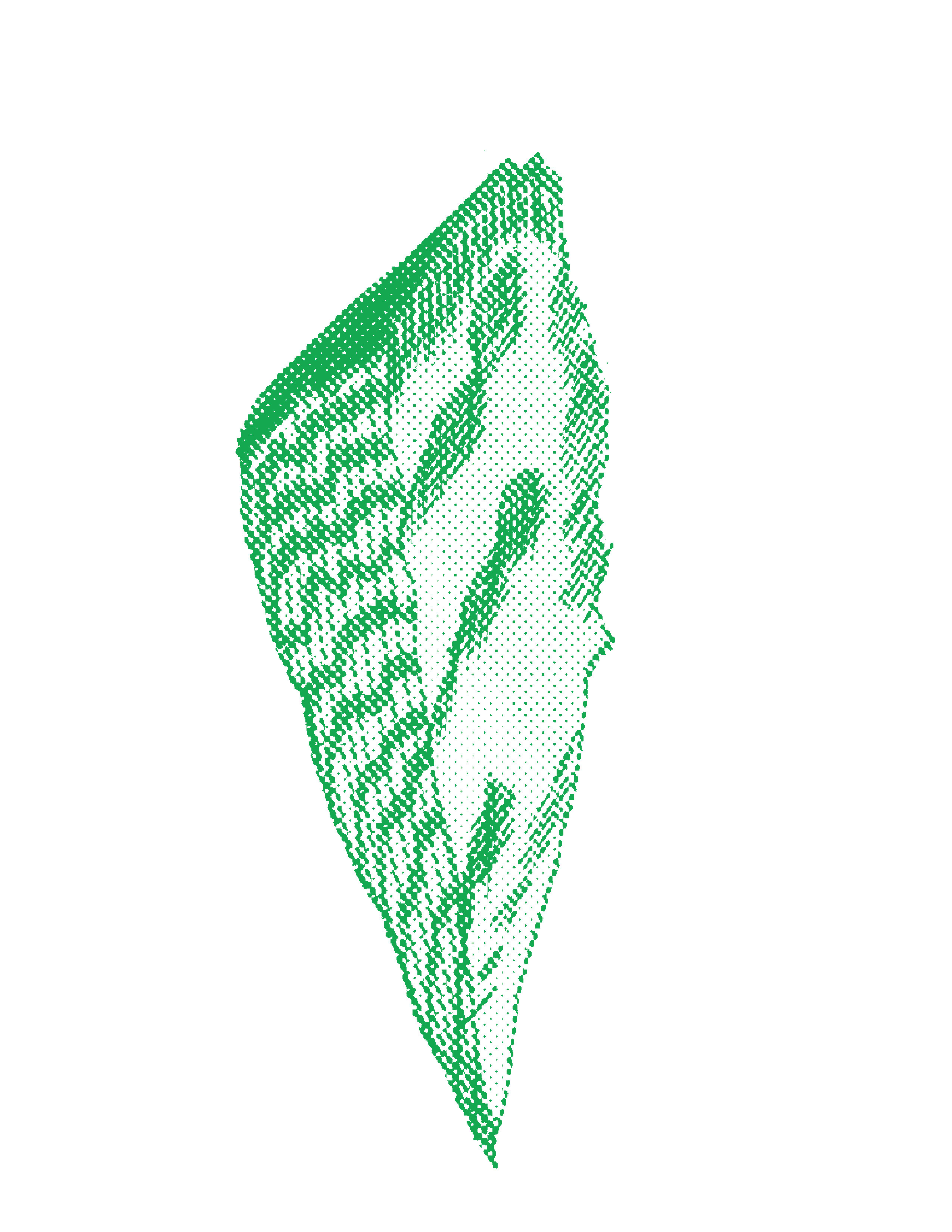

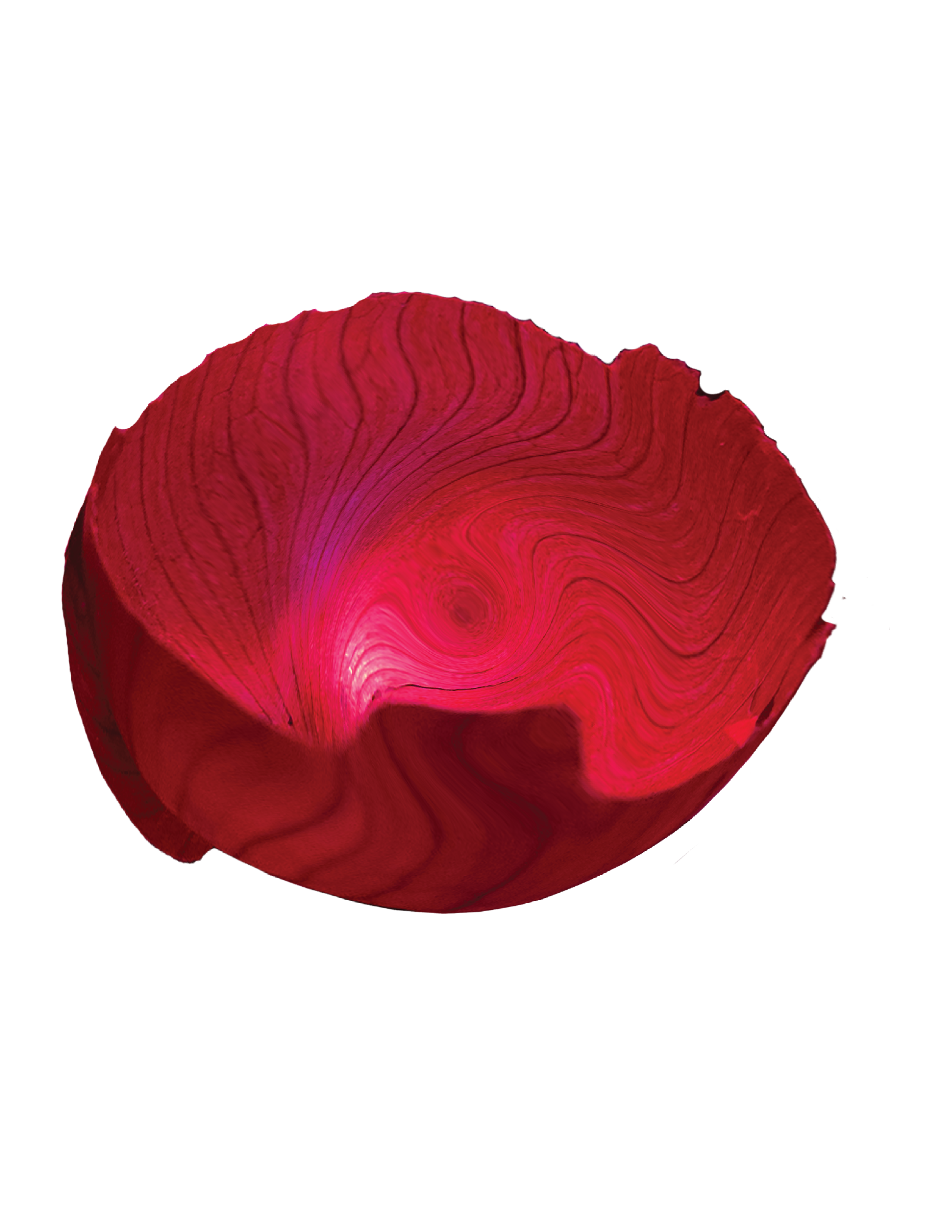





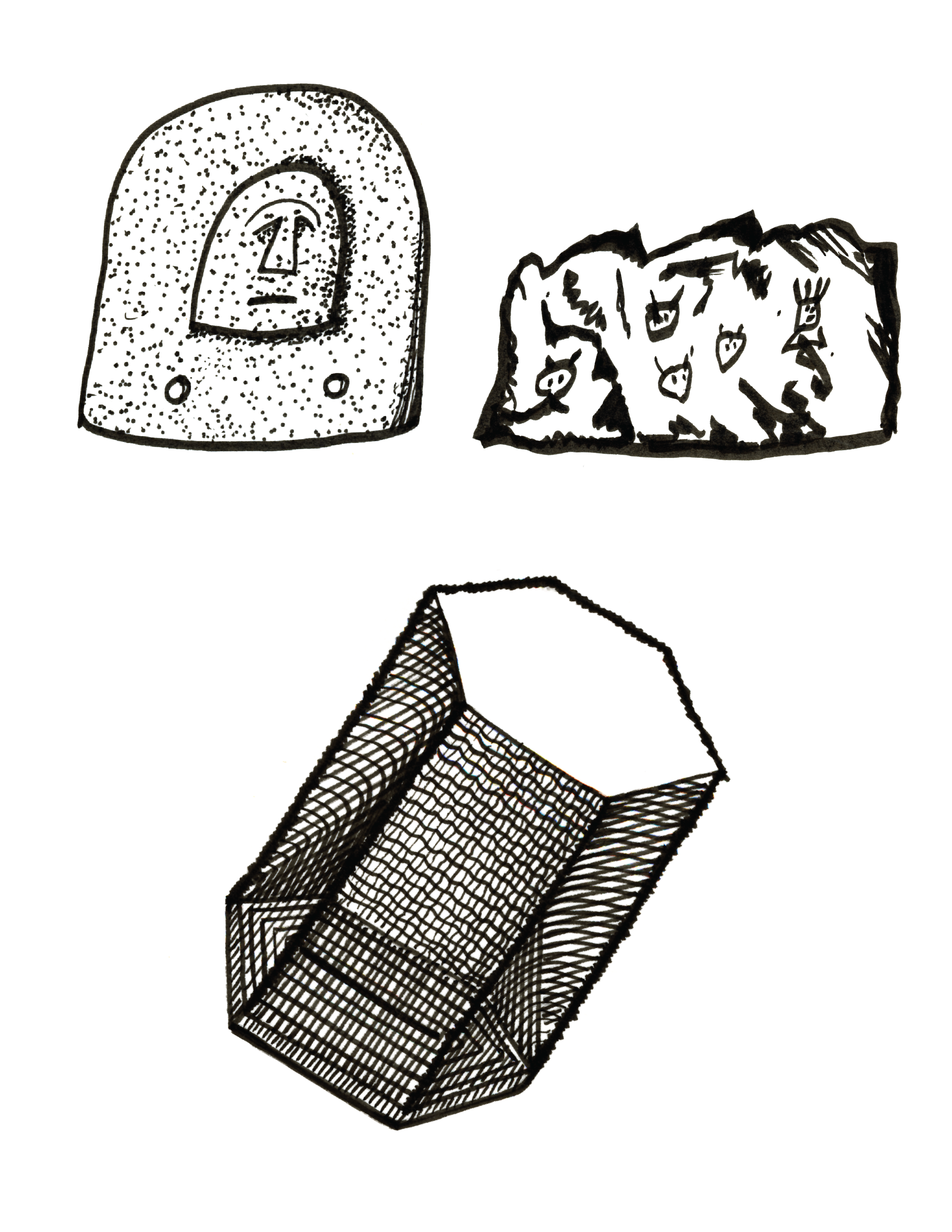

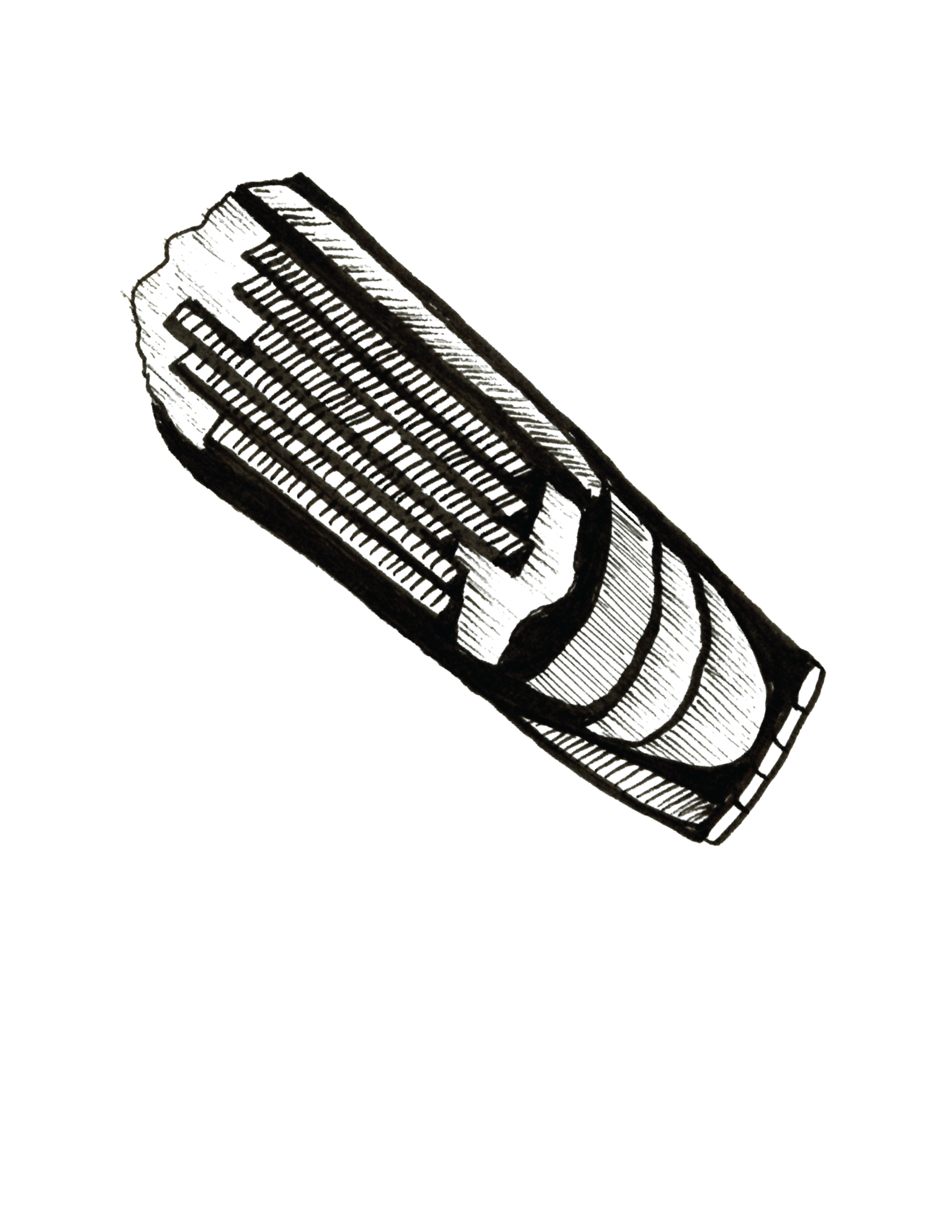
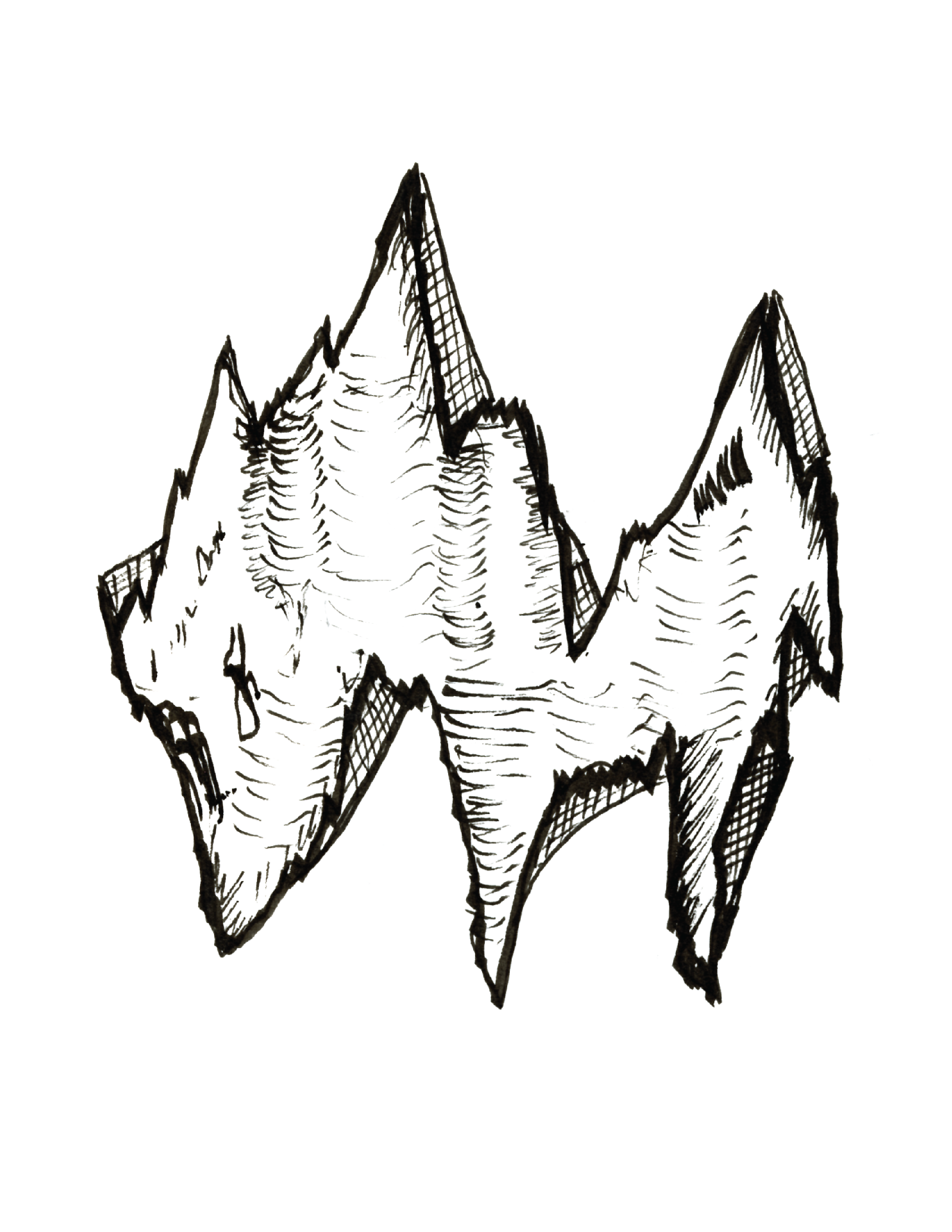





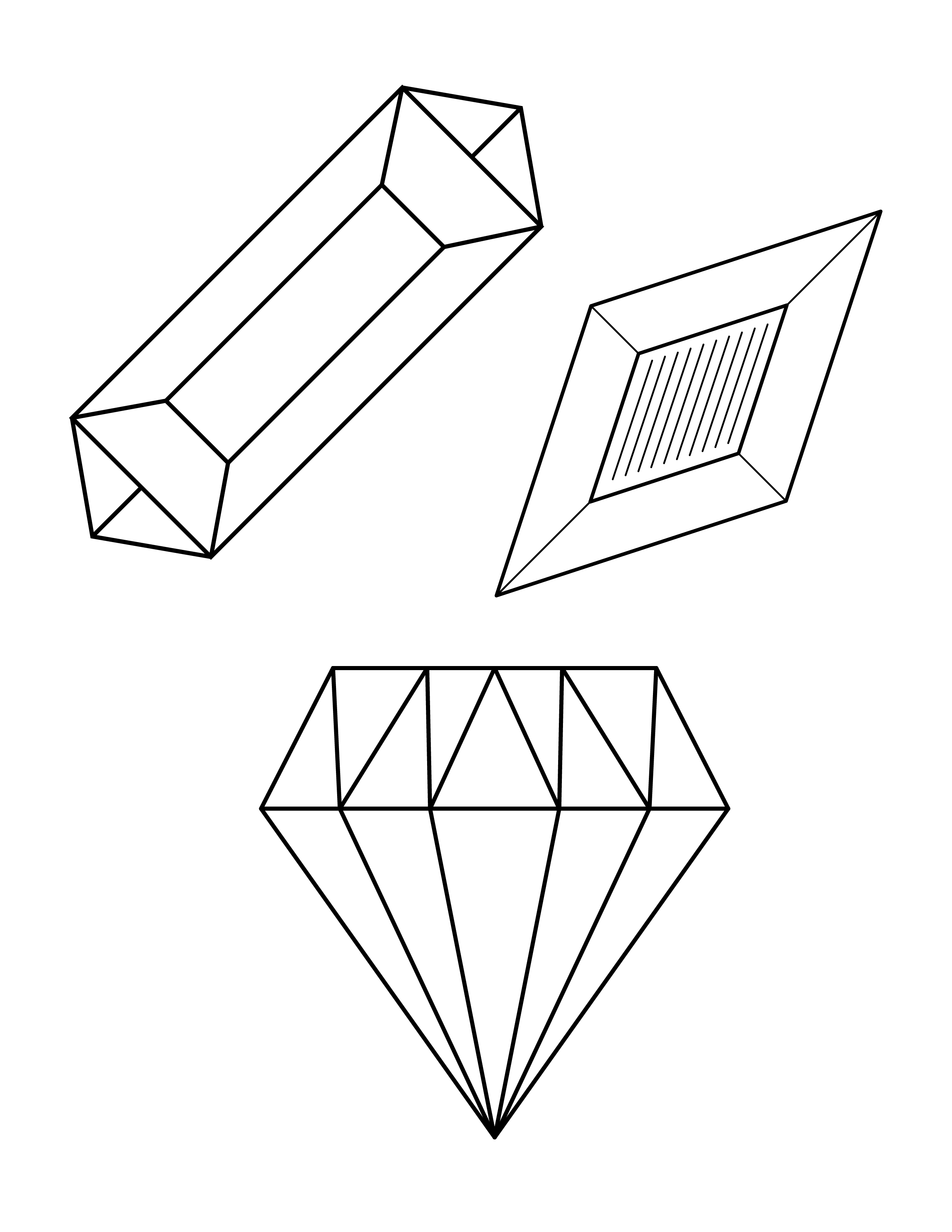
Process
This project provided me an opportunity to exhaustively explore different digital and analog methods to design forms inspired by the attributes of rocks. Categorical development helped me to diversify the outcomes and go more in-depth during research and development. The main emphasis was on lines, shapes, form, space, value, texture and color. From handcrafted analog versions of rocks to digital mosaics and collages, I found the whole exercise to be an intriguing and artistic endeavour which produced 140 unique rock formations.
During my research, I came across a variety of inherent qualities of rock, as well as historic rocks like rosetta stone and petroglyphs. If one wants, this project can be so vast as the planet itself as we are surrounded by nature’s majestic offerings.
Though I have been using Adobe Photoshop and Illustrator for many years, generally projects don’t involve using all their tools. But to create and manipulate images and textures that are distinct and innovative, I ended up discovering the capacity of these applications. I pushed them to their edge by creating renders that are complex and utilize a lot of RAM. The softwares did have hiccups but in the end provided me with great results.
I printed each rock on a letter-size paper and quilted them together to create a large canvas in which each rock could exist on its own. This helped me to exaggerate the details and textures achieved which otherwise would go unnoticed at a small scale.
Given the scale of this project, I developed a printed book that is comprised of:
1. Individual rocks printed on acetate paper
2. Critical writing about the process
3. Methods used to create each rock
4. Extraction of color palettes
5. Digital applications utilized to develop the rock formations
6. Posters and illustrations developed using the designed rocks
Though given the multiple stages of editing, scanning, processing and moderating was involved in development of each of the 140 rocks, in the process book I have tried to highlight the major stages for each unit to provide a glimpse of what went behind this project. To note, this project was developed within a week comprising of about 24 hours of active work.
